What Is Keyword Ranking?
Keyword ranking refers to a webpage's position in search engine results for a relevant search query. When a user searches a term in Google or other search engines, the position your webpage appears in is your keyword ranking.
By establishing and improving keyword rankings, you can attract more website traffic from Google and other search engines.
Most people click the first search result they see. So ranking number one for a keyword will typically earn you more traffic than ranking number two. And so on.
As you try to increase your unpaid traffic from search engines (i.e., conduct SEO), you will need to keep track of where your website ranks for relevant keywords.
This article will teach you how to do that. For free.
Simple Keyword Ranking Example
Here’s a real-world example of how keyword rankings work:
Say you’re an arborist in Seattle. You might want to rank your website for this keyword: “Seattle arborist.”
If you search that keyword and your website is the third result, your keyword ranking is three. You’re in the third position.
Like so:
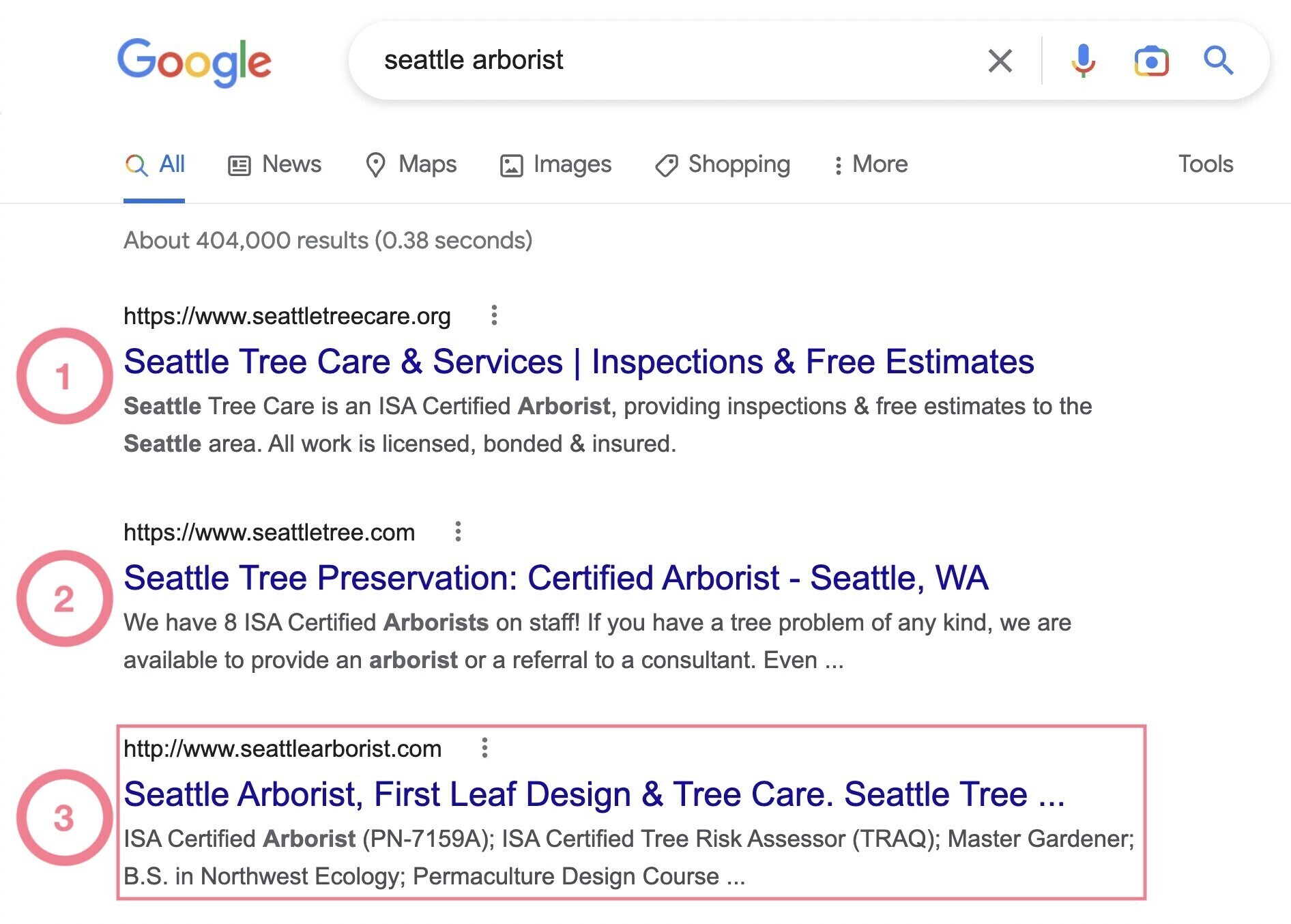
Why Is Tracking Keyword Rankings Important?
Your website’s keyword rankings will frequently change.
Here are some things that might cause your keyword rankings to change:
- You (or your competitors) publish new content
- You get (or lose) backlinks from authoritative websites
- You optimize your page titles and meta descriptions
- Google updates its algorithm
And others.
Keyword rankings change. And when they do, it can reduce traffic to your website and hurt your business.
Tracking your keywords is a must.
Let’s return to the Seattle arborist example.
You’re hoping to get more traffic from Google. And, in turn, more clients.
So, you plan to write blog posts for your website. Those posts will target specific keywords. And hopefully, rank well in search engines.
How do you know which keywords to target?
In the Keyword Magic Tool, you type a seed keyword: “Washington State trees.”
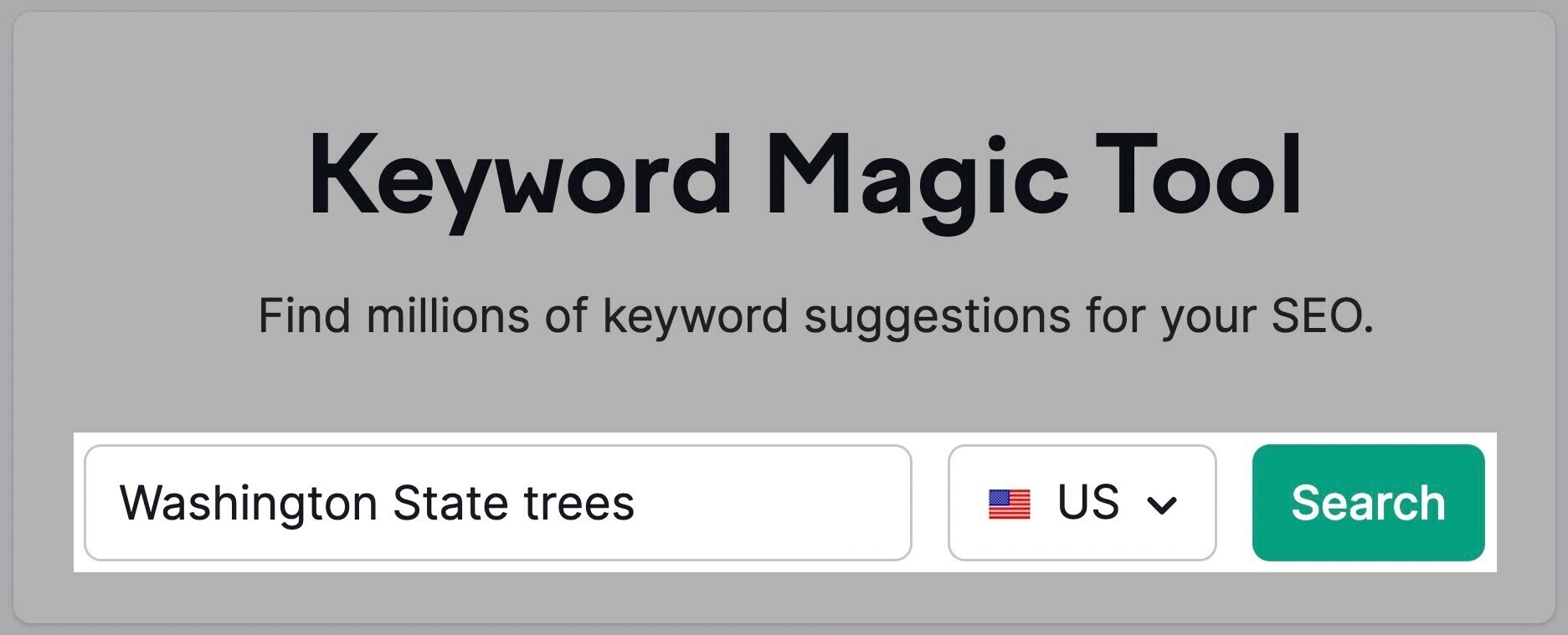
You get a list of possible keywords to target. And you see one you like: “trees native to Washington State.”
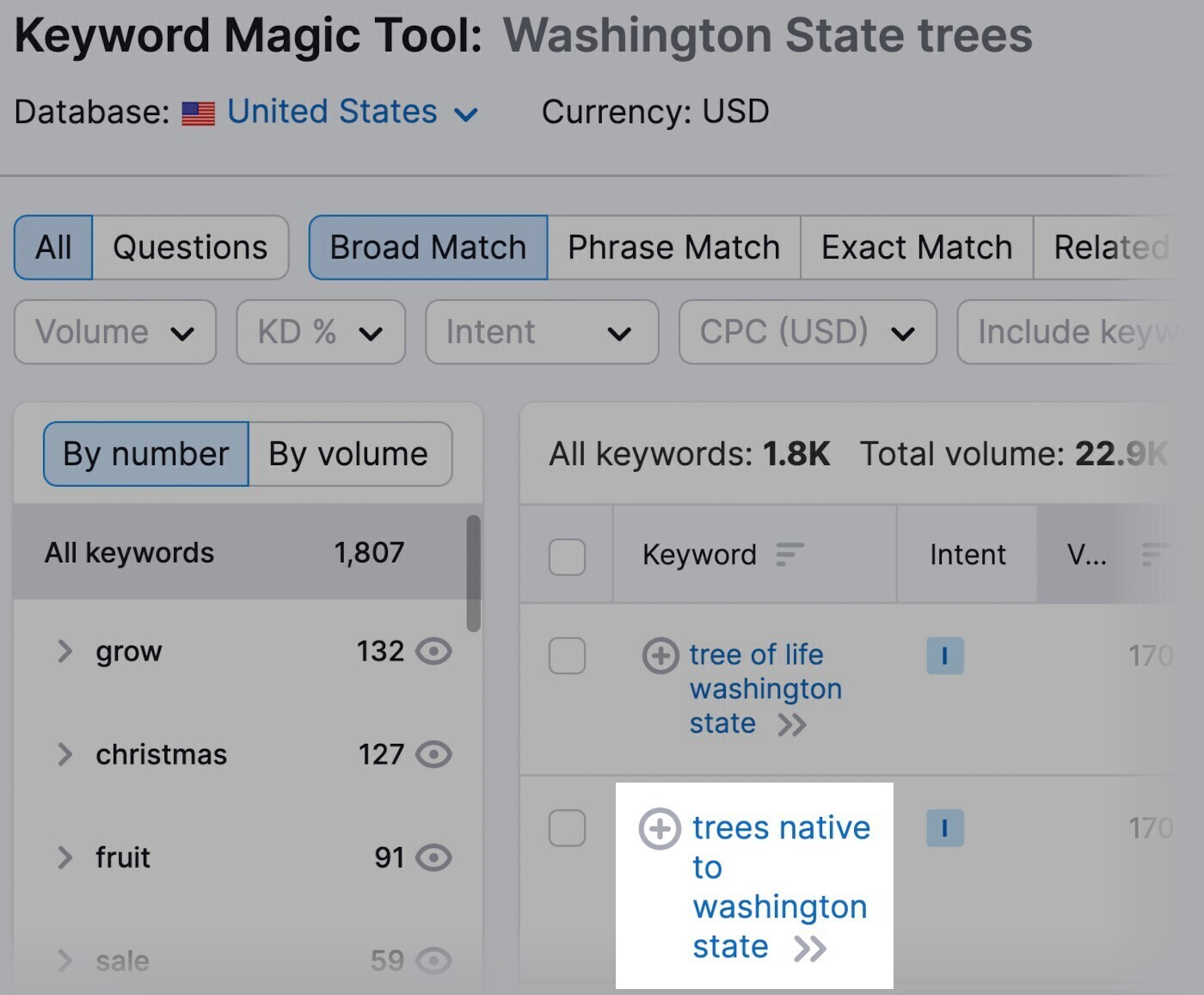
You click it. And the Keyword Overview displays:
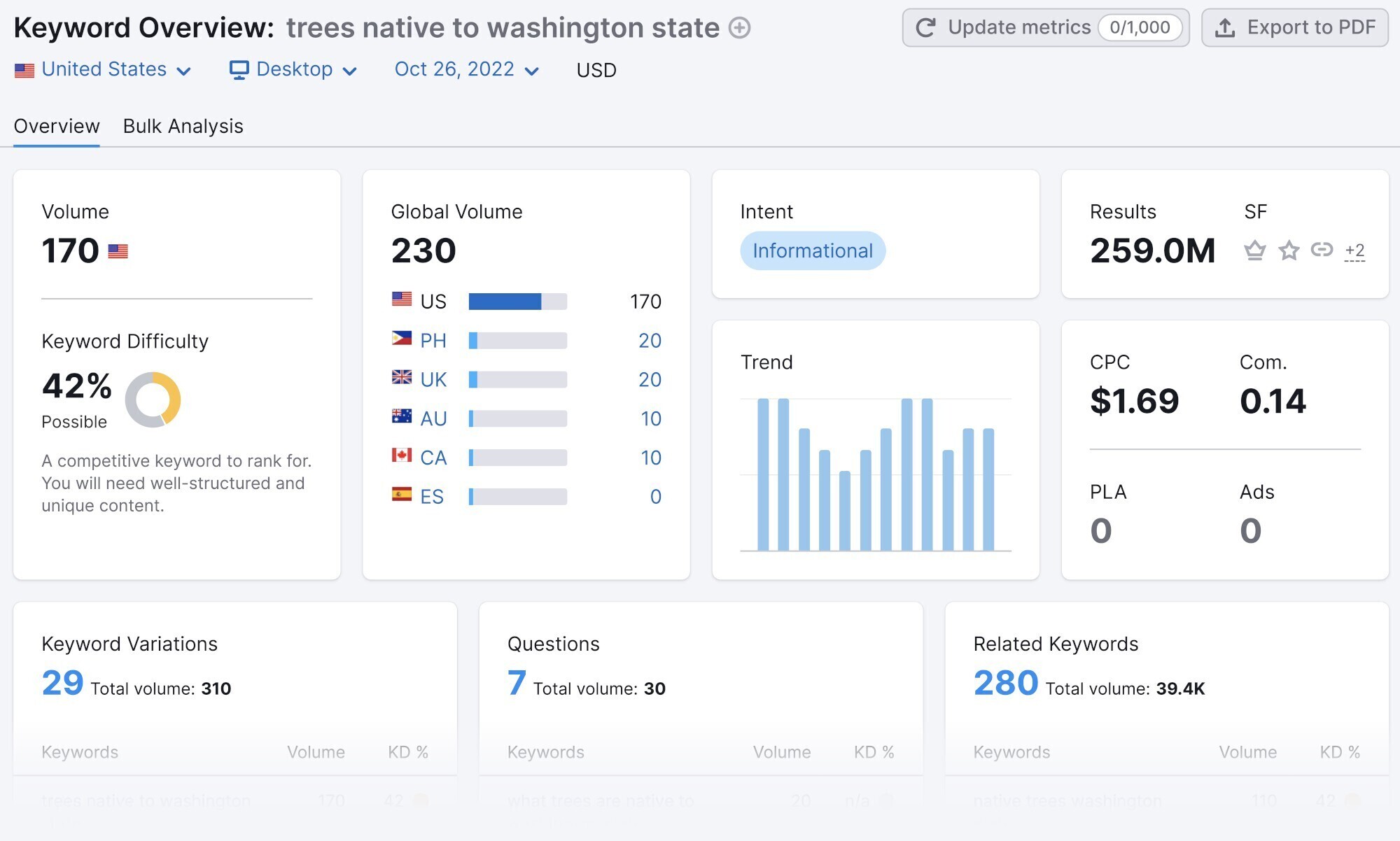
There, you get all kinds of information about the keyword:
- How many times it gets searched each month (search volume)
- How difficult it will be to rank well for the keyword (keyword difficulty)
- Keyword variations and related keywords
- Search intent
- Analysis of the search engine results page (SERP) for the keyword
You have what you need to write a great blog post targeting the keyword. You write it. And publish it.
Then what?
Hopefully, the blog post skyrockets to the top of the SERP for “trees native to Washington State.”
But you won’t know what happens if you don’t track the keyword ranking. That’s why tracking your rankings is important.
How to Check Your Current Rankings for SEO Keywords
What if you just want to know what your search engine keyword rankings are right now?
After all, you have to know where you’re starting from before you track your rankings over time.
Here are a couple of ways to check your current keyword rankings:
The Manual Method: Private Browser Window
The manual method is simply entering your keyword into Google.
But Google sometimes shows you the results it thinks you want to see. To check how it looks for the average person, run the search in a private browser window.
Here’s how:
- Open a private browser window. (That’s an incognito window in Chrome and private browsing in Firefox and Safari.)
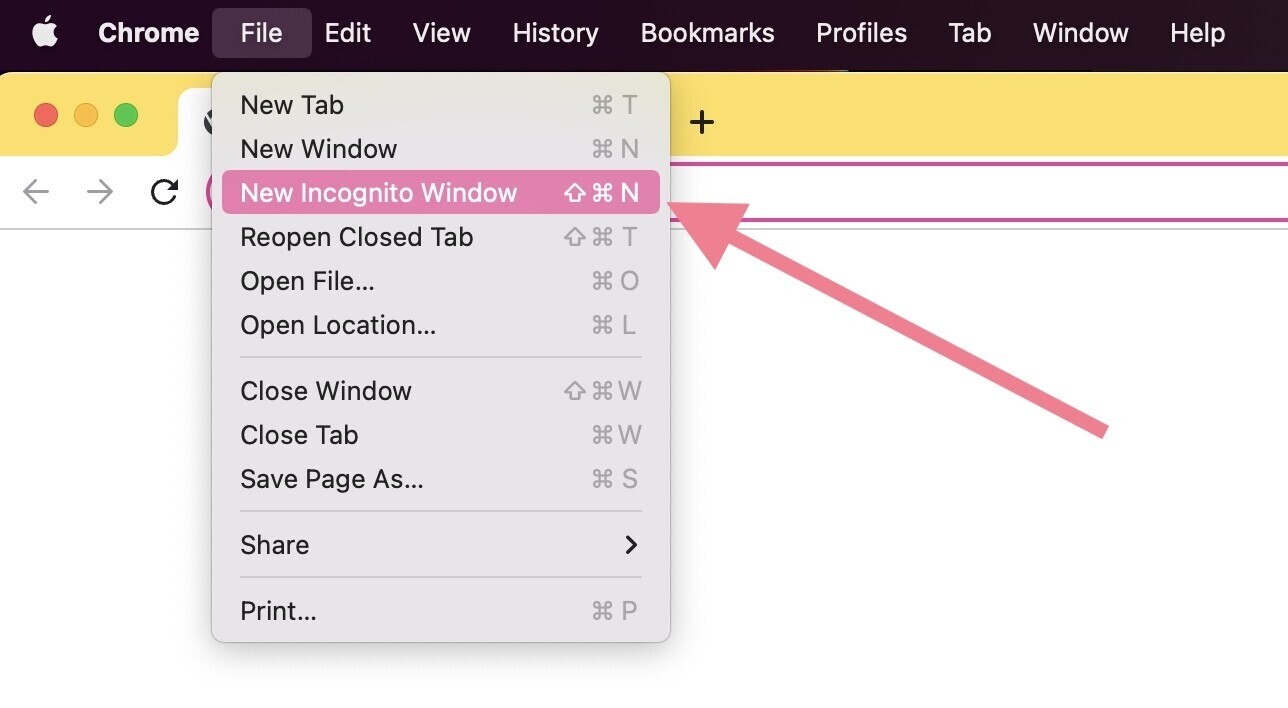
(A private browser window means Google won’t use your browser history to give you personalized search results.)
- Search the keyword you’re interested in.
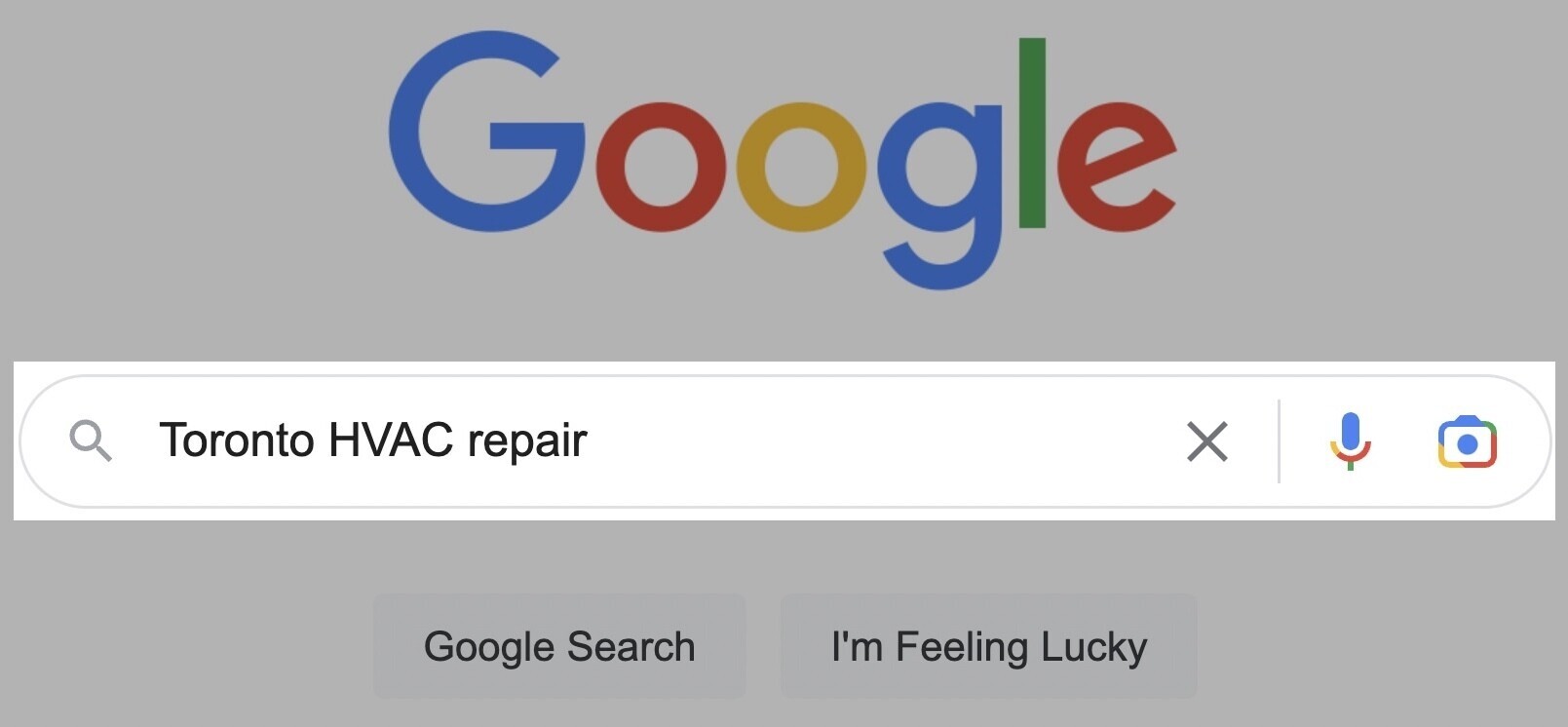
3. And count the search results (starting below the ads, maps, and featured snippets) until you see your website.
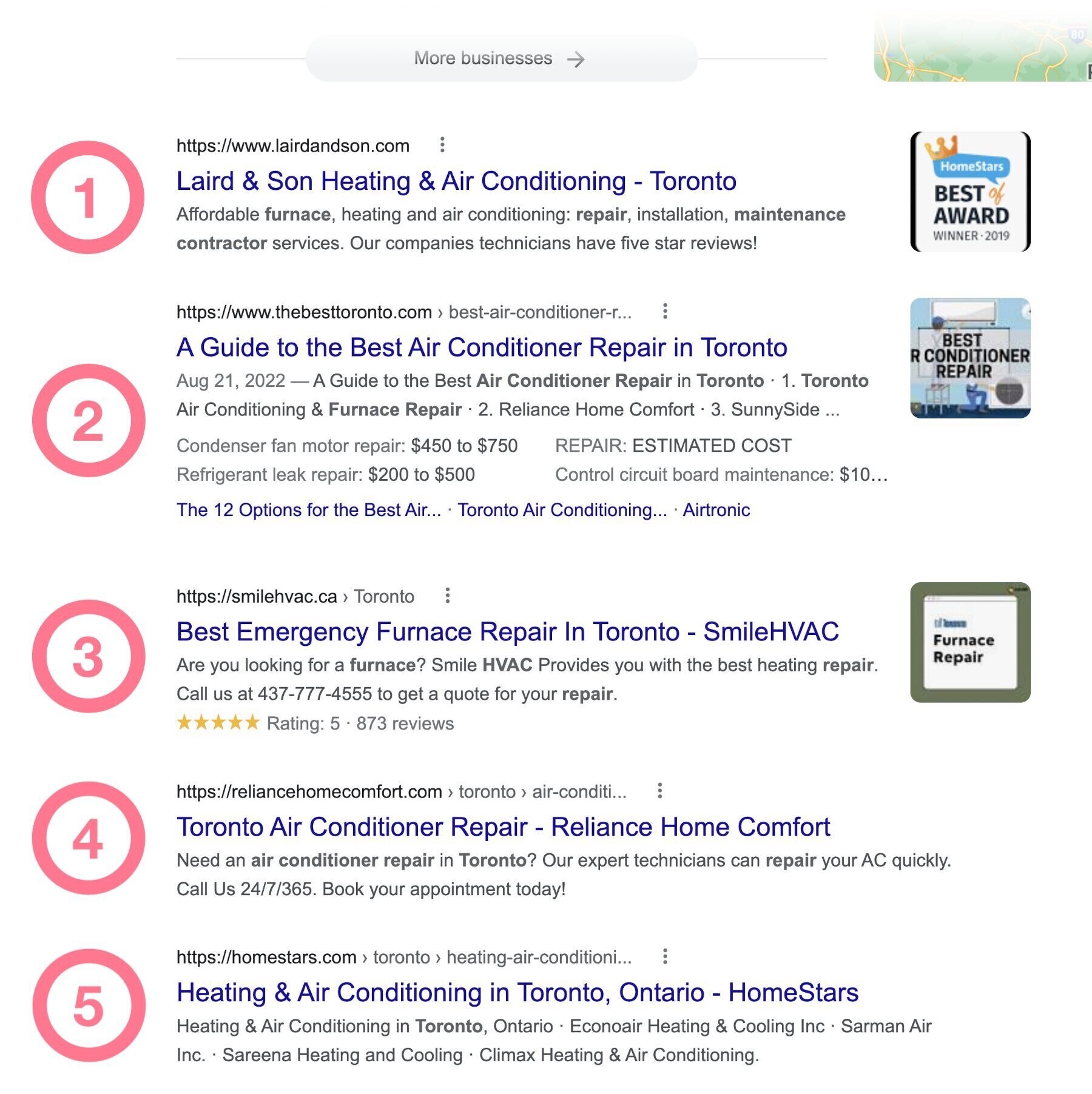
The number you count to is where your webpage currently ranks for this keyword.
The Bulk Method: Google Search Console
Ready for a more efficient way to check your current rankings for SEO keywords?
This method gives you the full breadth of keywords your domain ranks for.
So, rather than the laborious task of searching for each keyword on Google, you get everything.
Click on “Search results” under “Performance.”
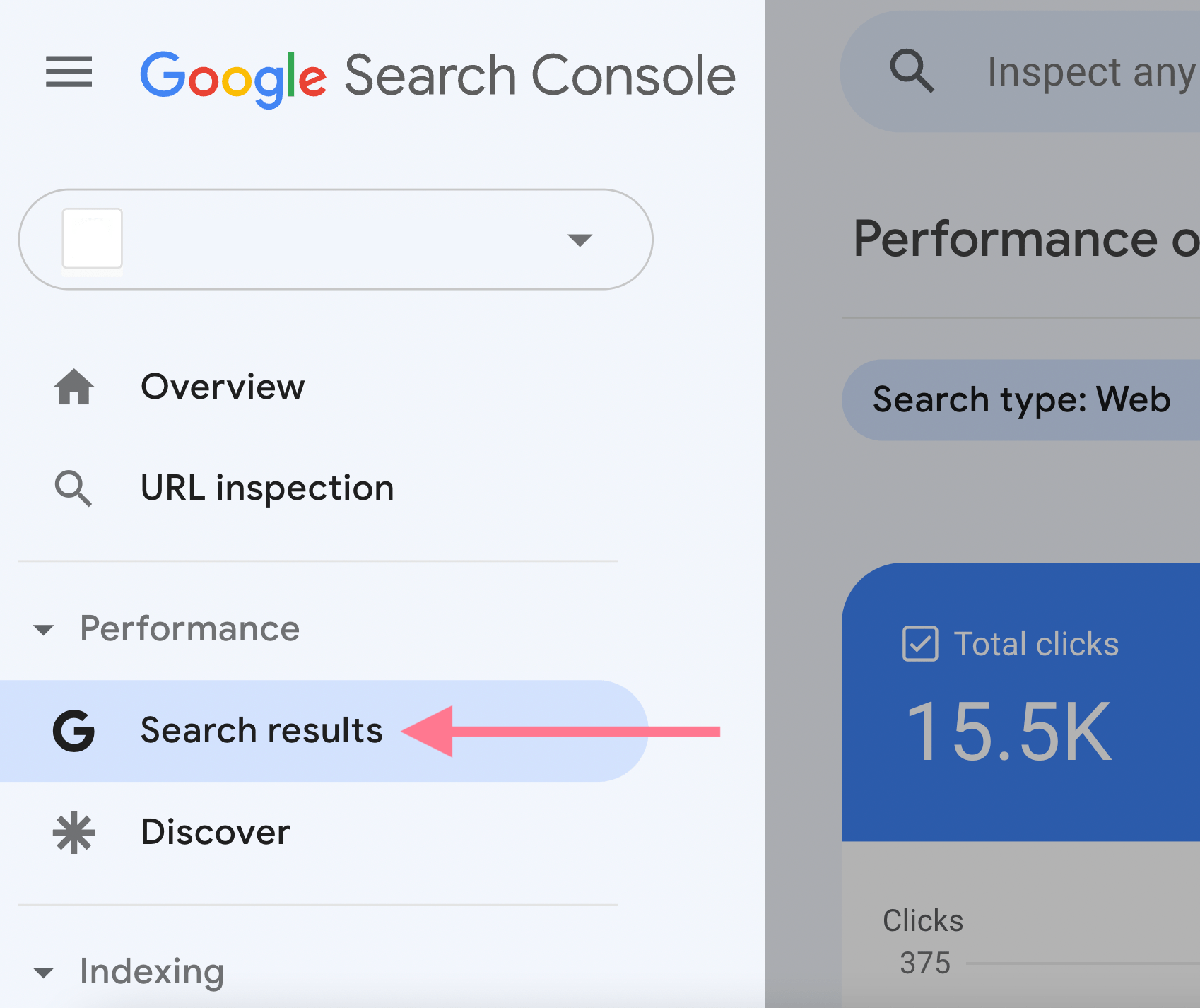
Select “Average CTR” and “Average position.”
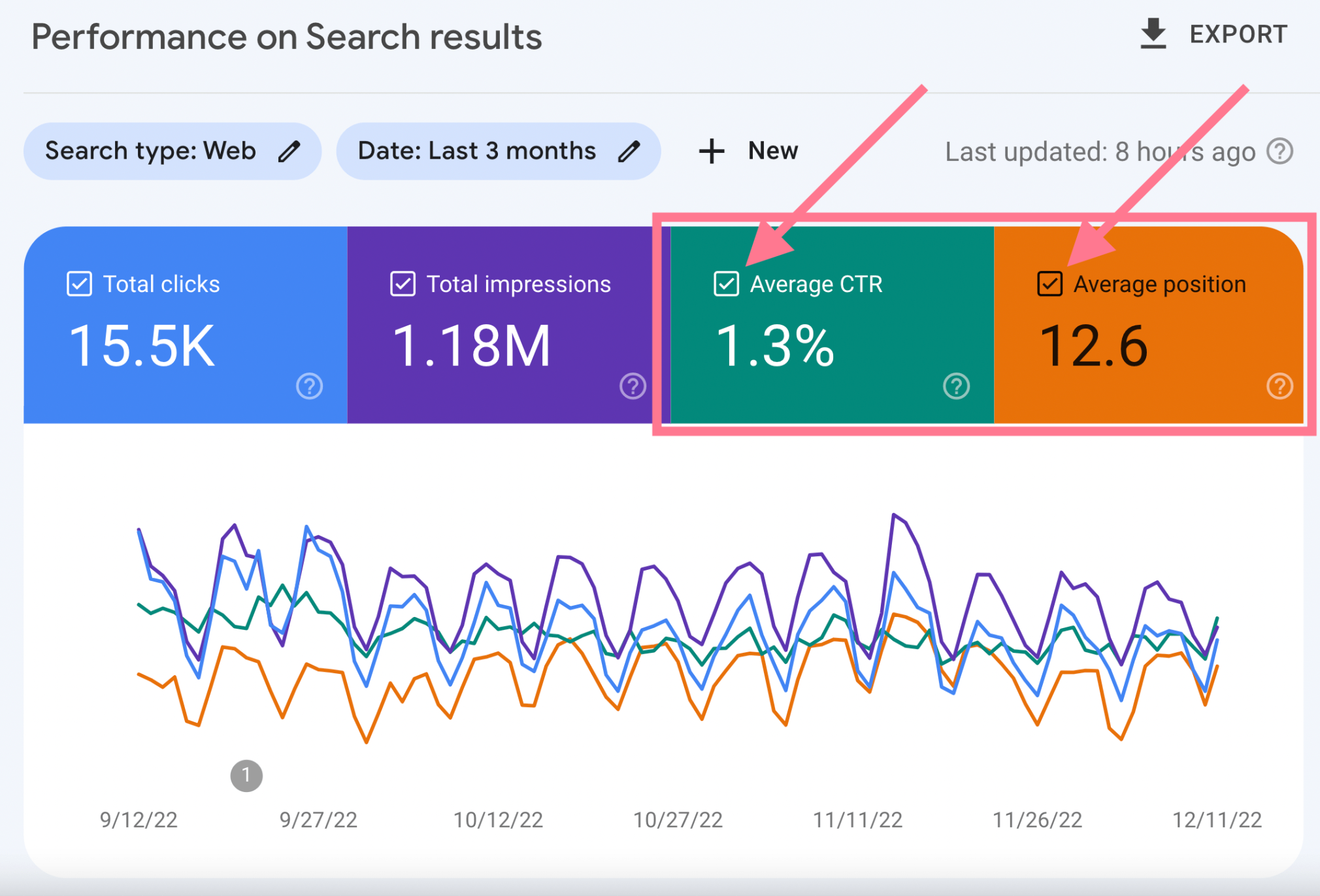
Then scroll down to see the queries report. You’ll get a complete list of your SEO keyword rankings.
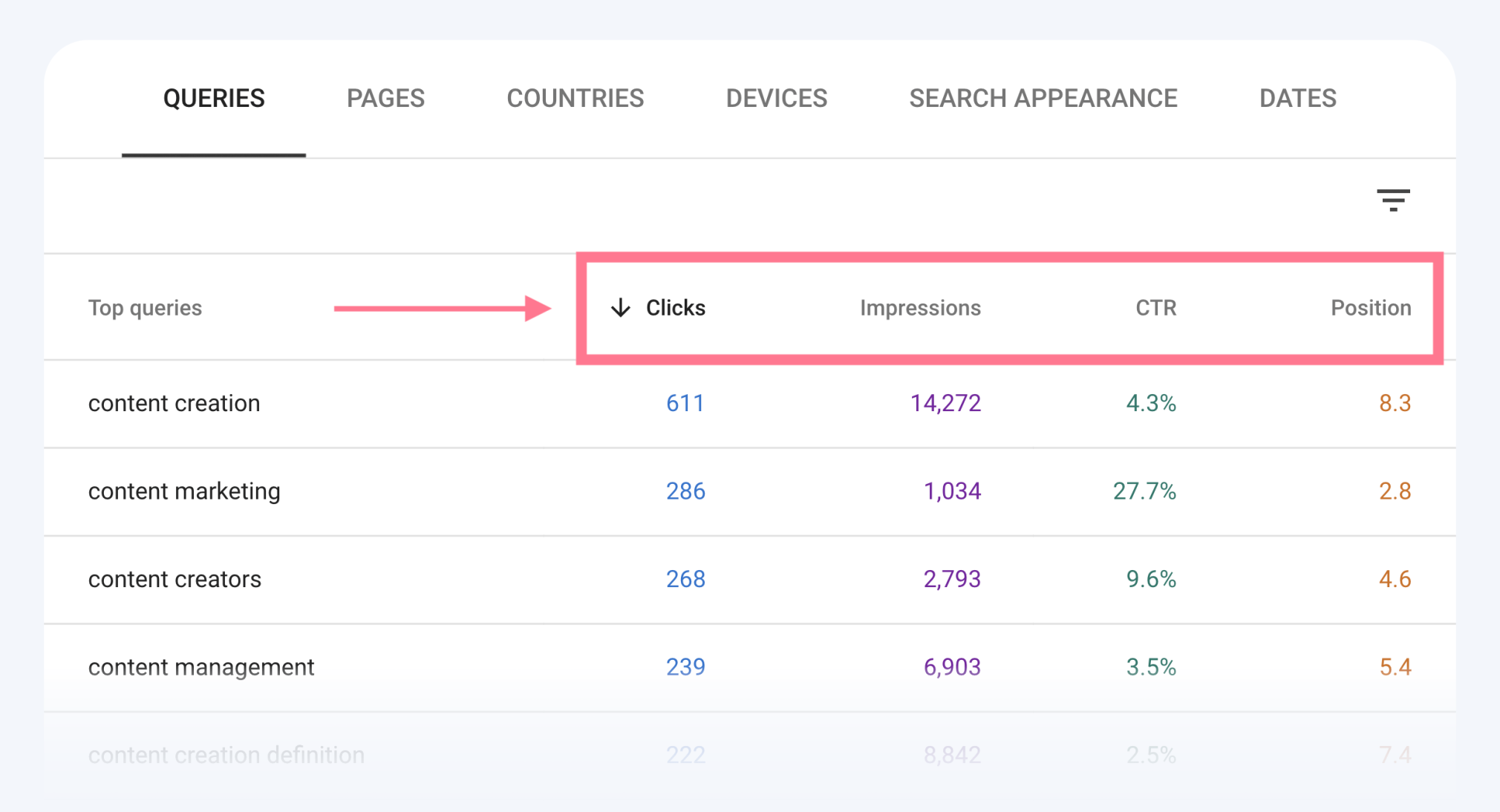
You can sort them by position. Or a bunch of other metrics.
How to Track Keyword Rankings
You can also track your keyword rankings over time. Automatically.
Which can help you respond faster when your website loses its ranking for a keyword.
Here’s how:
Step 1: Choose the SEO Keywords to Track
To determine which keywords to track, you need to do some keyword research.
And that involves seeing what you and your competitors rank for. Or could rank for.
You can use the Organic Research tool to create a full list.
Then, you can also see what your competitors are ranking for.
Just run their domains through the tool, too.
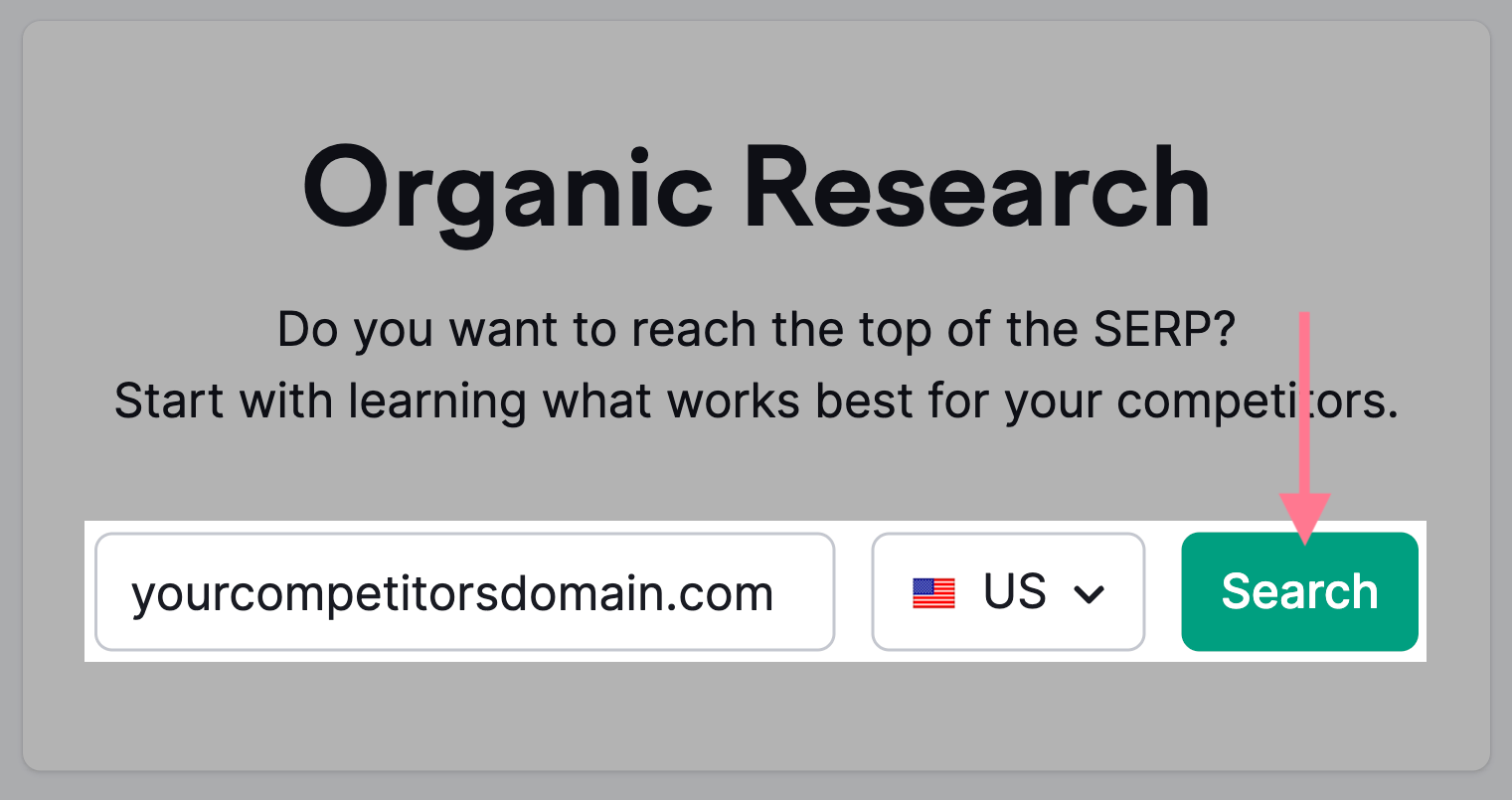
That way, you can see all the keywords they’re currently ranking for.
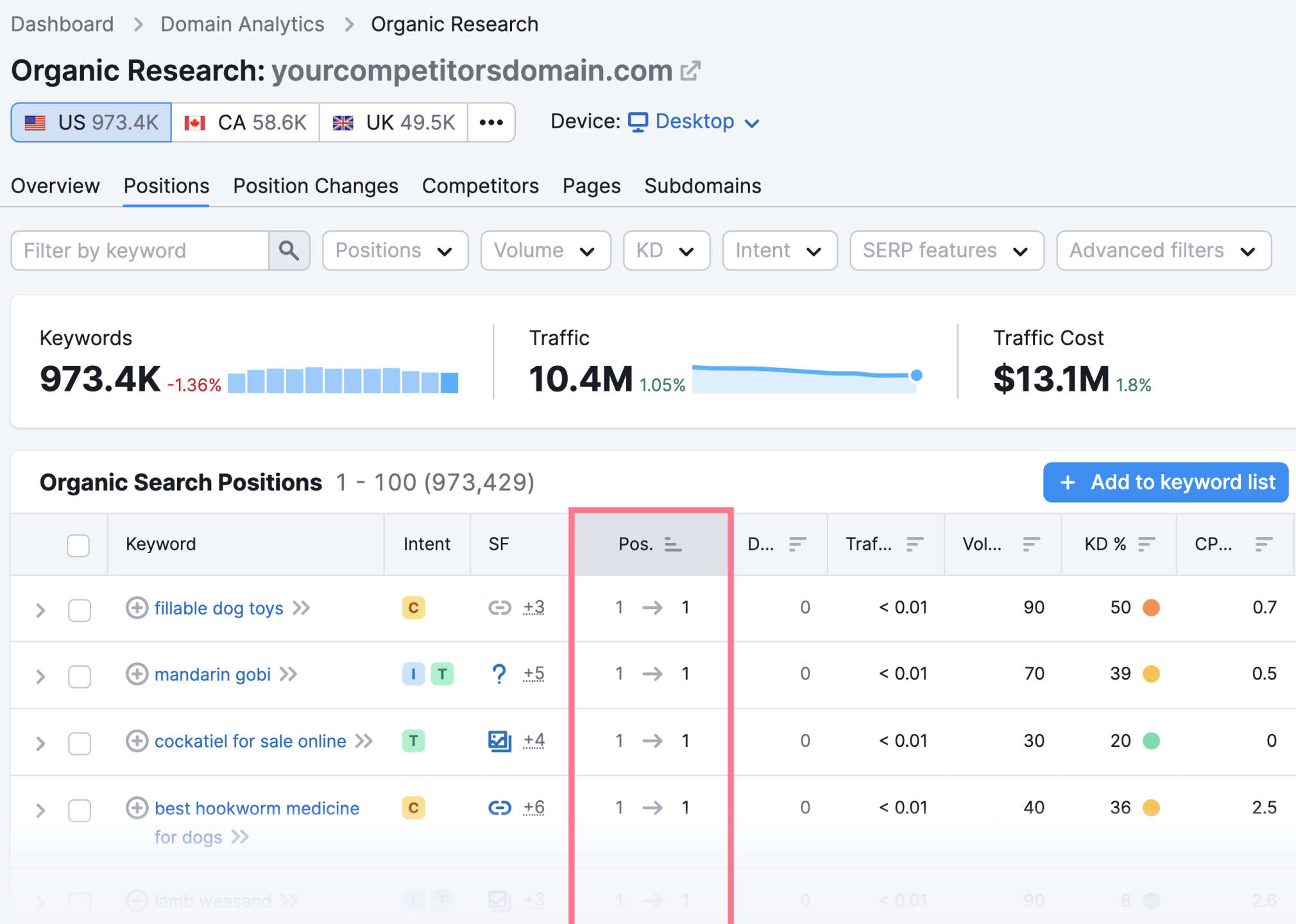
Why?
Because your competitors are likely ranking for some great keywords you haven’t thought of yet. And aren’t currently ranking for.
Lather, rinse, and repeat the Organic Research steps for each competitor.
Write down the keywords you like as you go.
Then, you can take those keywords and run them through the Keyword Magic Tool.
It can uncover millions of keyword suggestions.
To get started, add one of the keywords to the search bar.
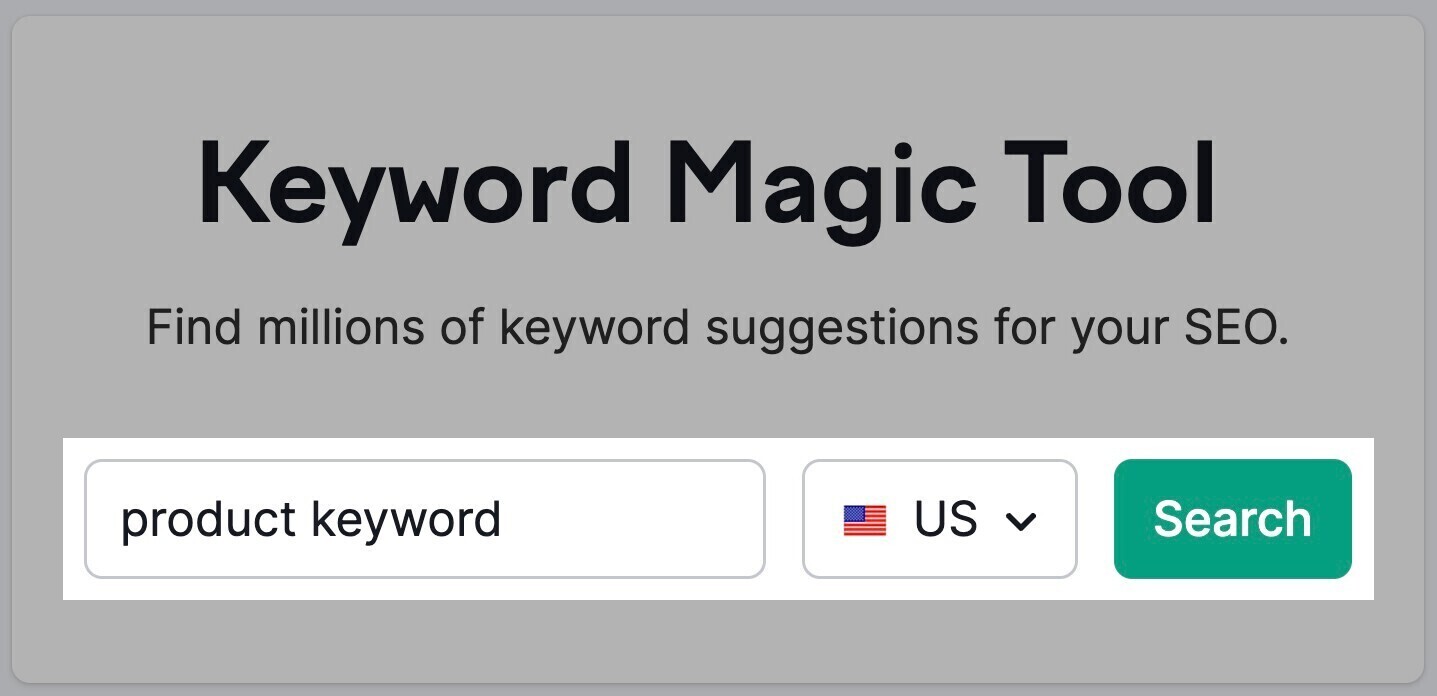
Click “Search.”
And you’ll get a ton of keyword options—over 235,000 in the example below. Sift through them carefully.
Look for high volume, low difficulty, and subject matter relevancy.
Add the ones you like to your list.
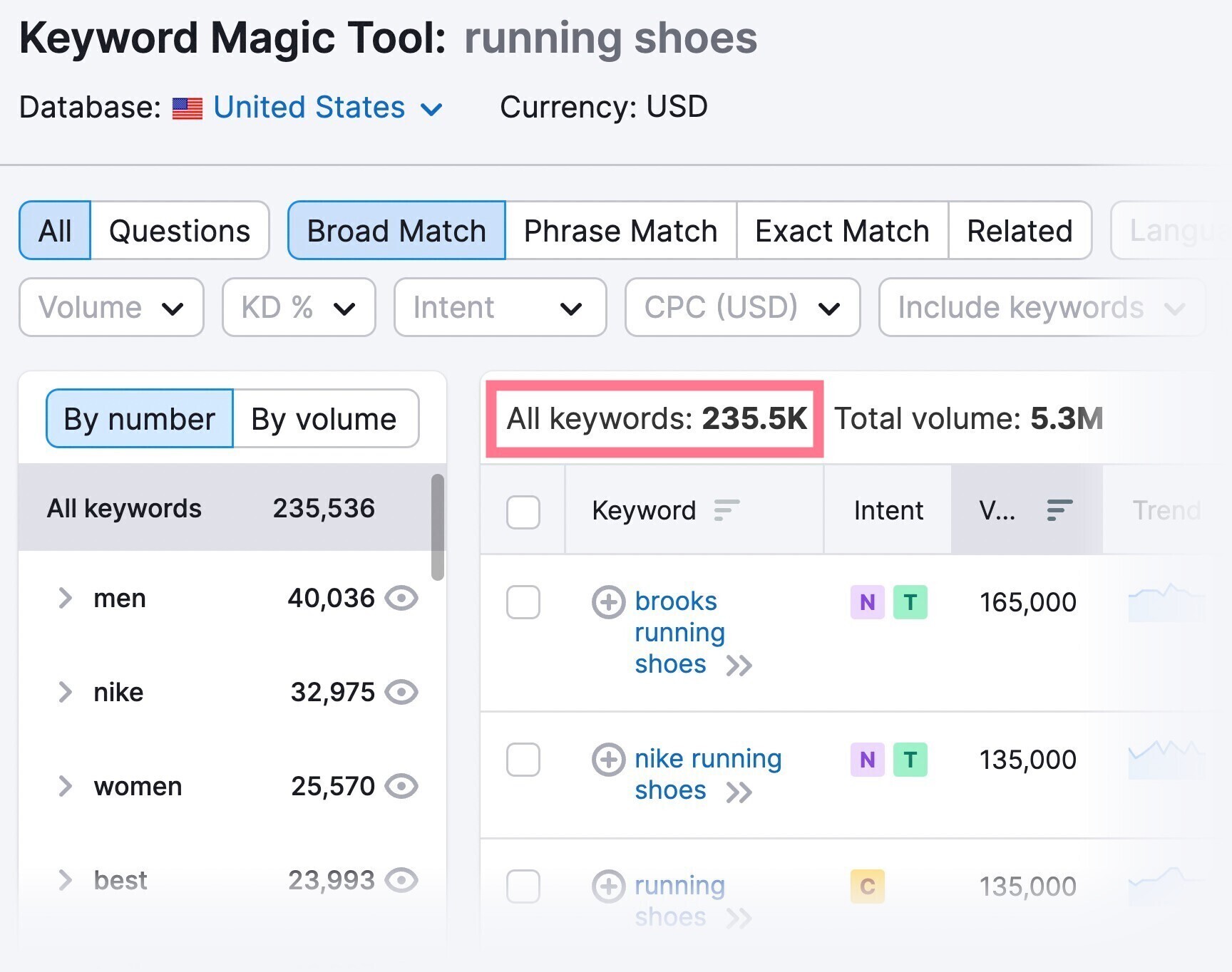
Now that you have a list of keywords you want to track, it’s time to set up a tracking campaign.
Step 2: Set Up a Tracking Campaign for Your Keywords
A tracking campaign for your keywords can help monitor your (and your competitors’) rankings on a daily basis.
You can set up custom notifications to stay on top of any changes in positions. And discover who competes with you for target keywords.
To set one up, open Semrush’s Position Tracking tool.
First, enter your domain—or your competitors’—into the search bar.
Like this:
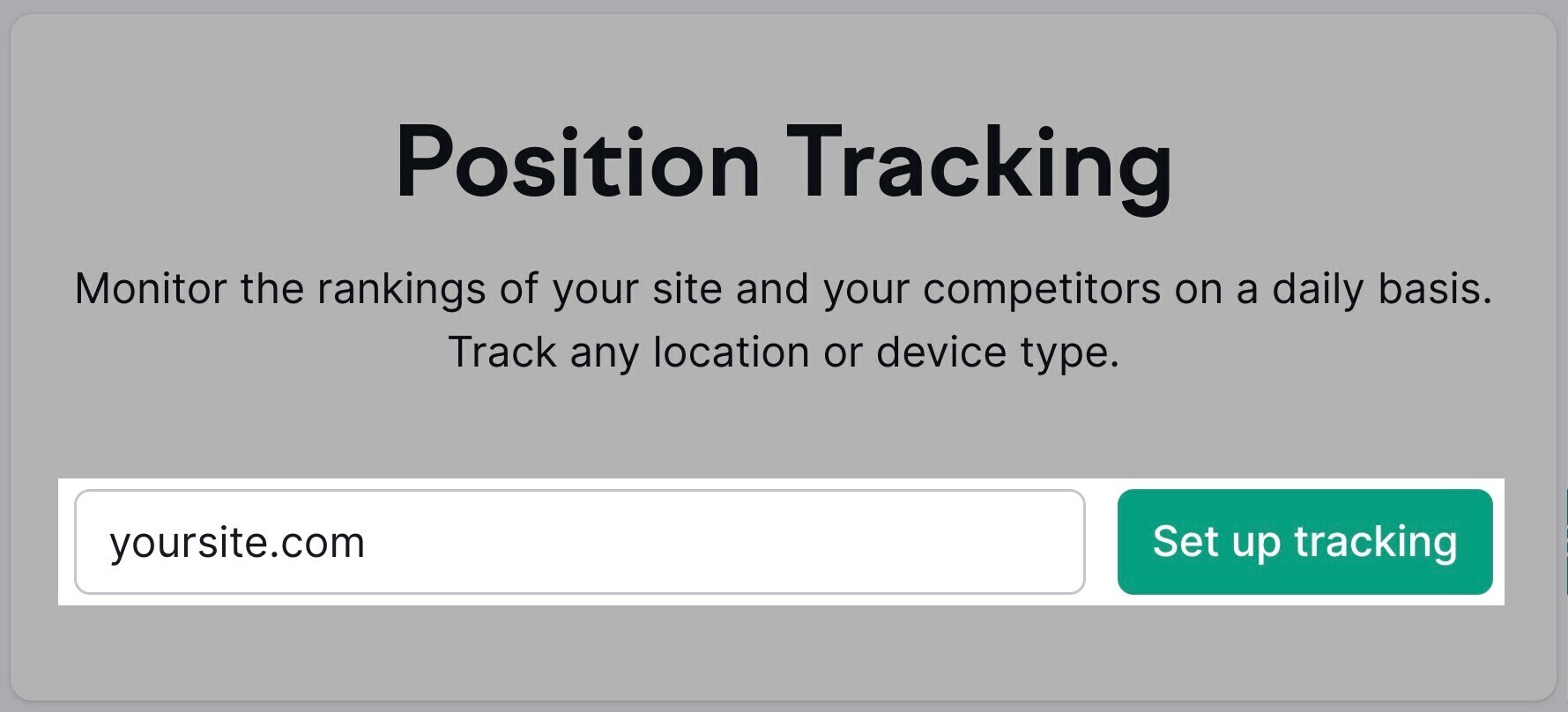
Then, click “Create project.”
Select the search engine and device you want to use to track your rankings. Specify a location and language (if you want to reach users in a particular location):
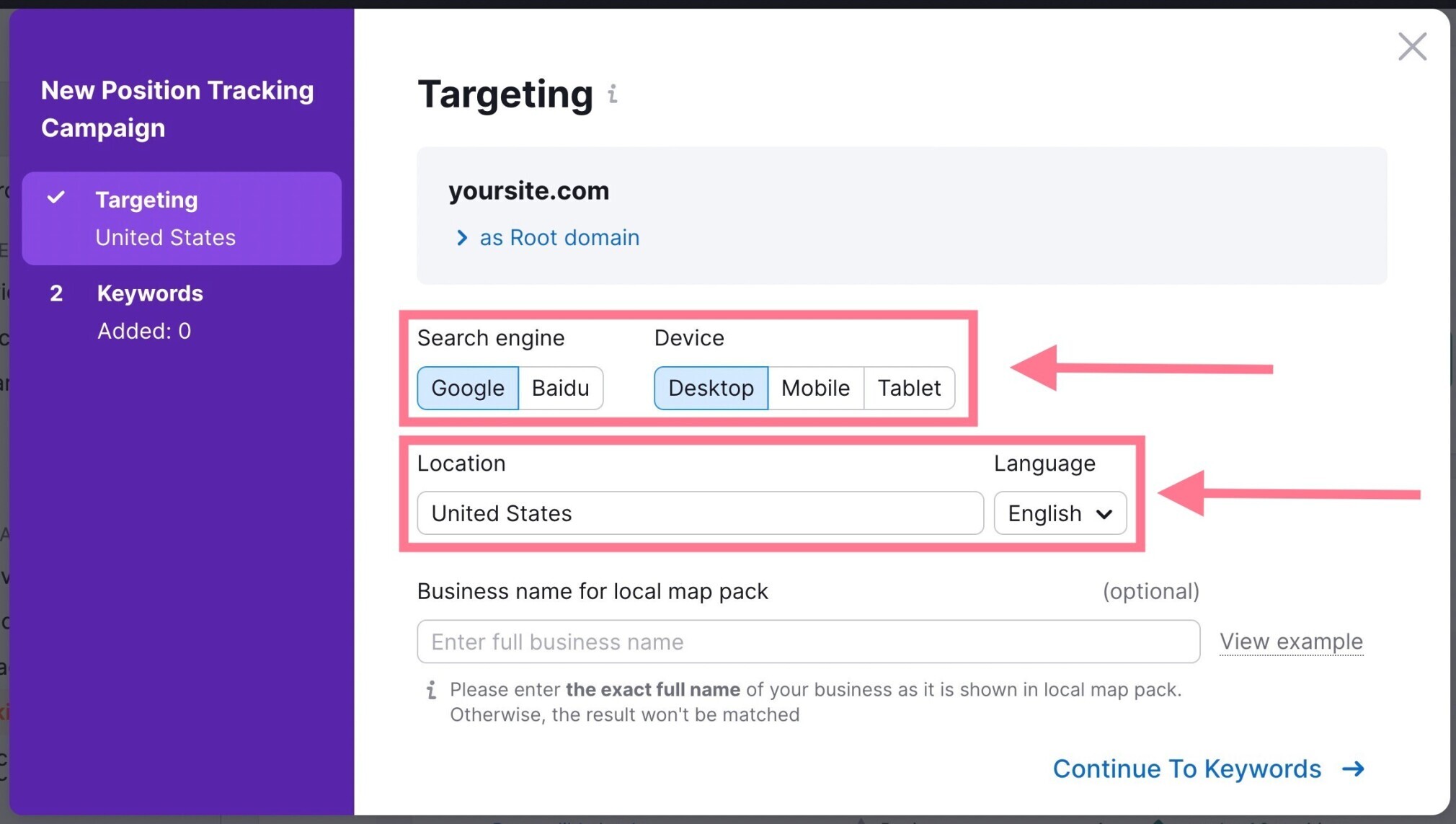
Add the keywords you want to track into the field. (Remember the list you created in Step 1.)
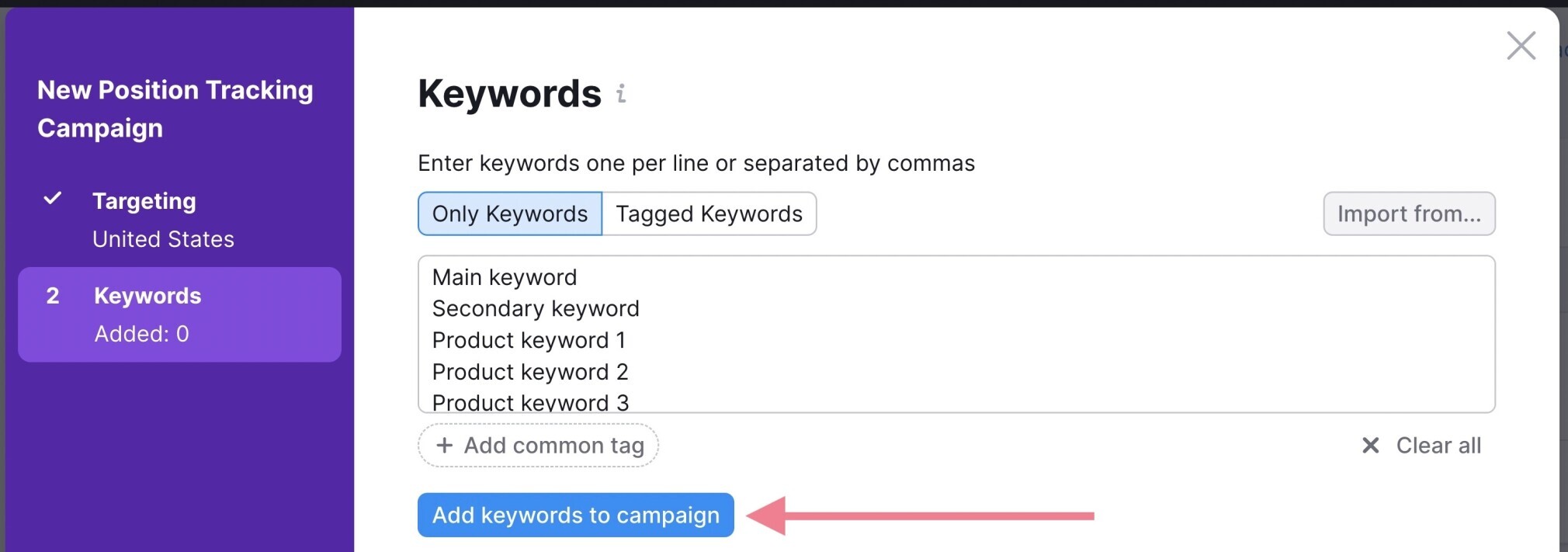
All done? Click “Add keywords to campaign.”
Then, scroll down and click “Start Tracking.”
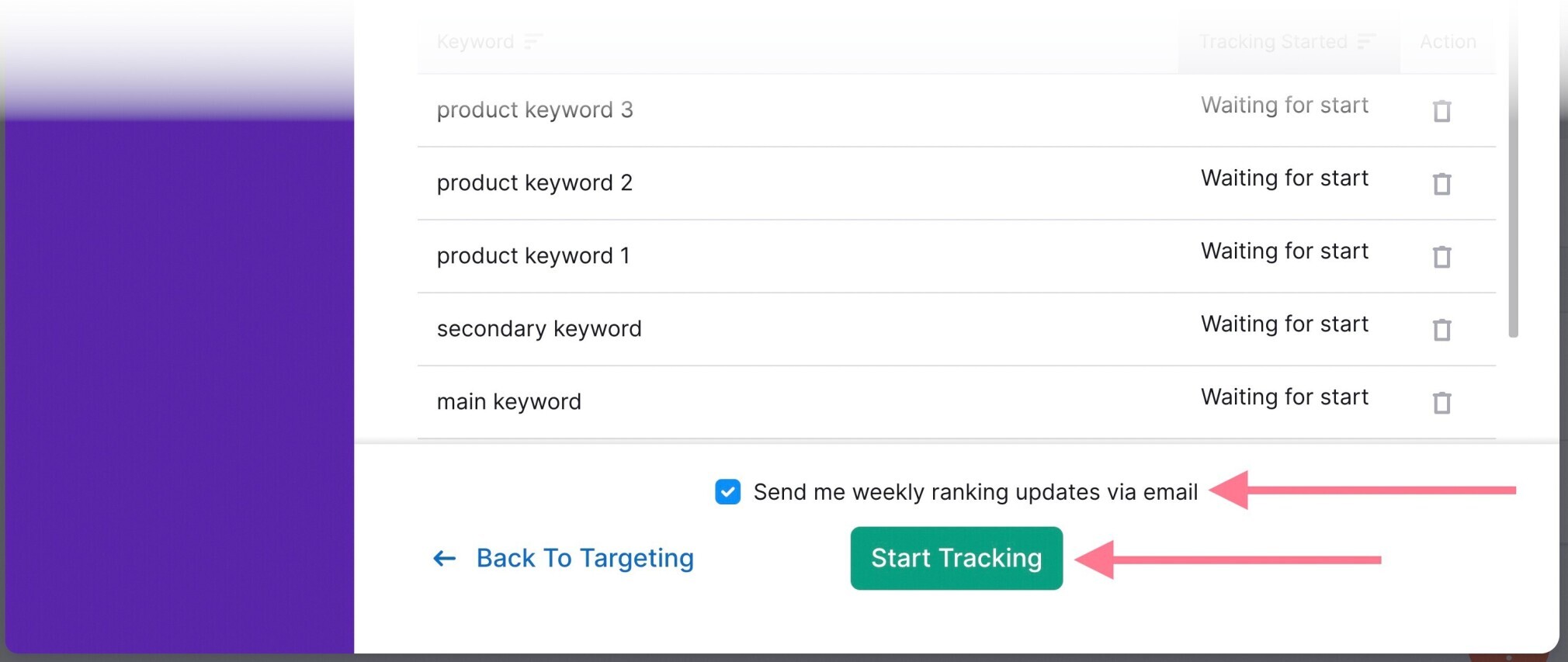
You can also keep “Send me weekly ranking updates via email” checked to receive an automated summary of your campaign.
Step 3: View Your Keyword Rankings
Then, you’ll be able to see your rankings in your Project Dashboard.
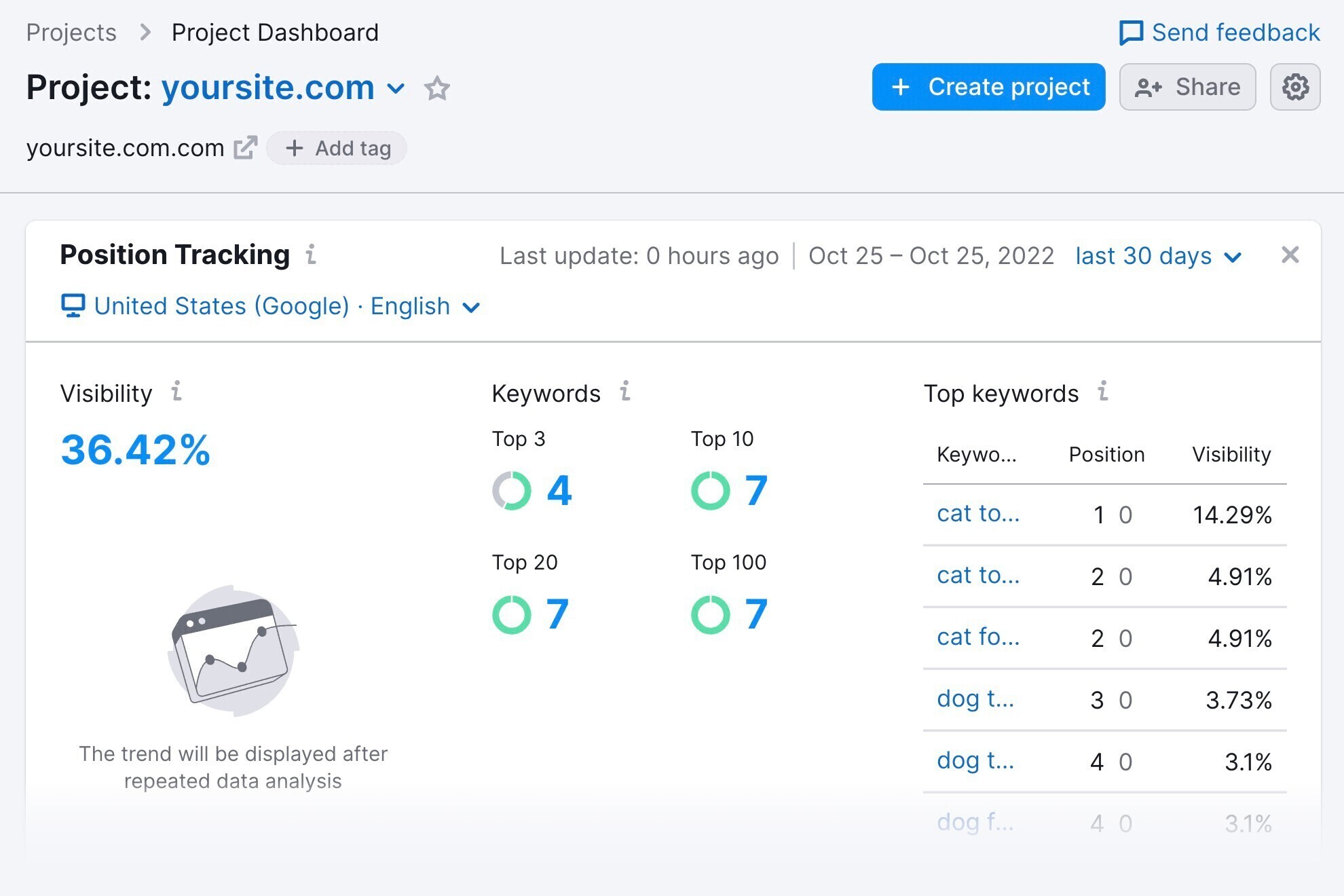
You can compare your rankings over time by going to the “Overview” report in the Position Tracking tool.
Here:
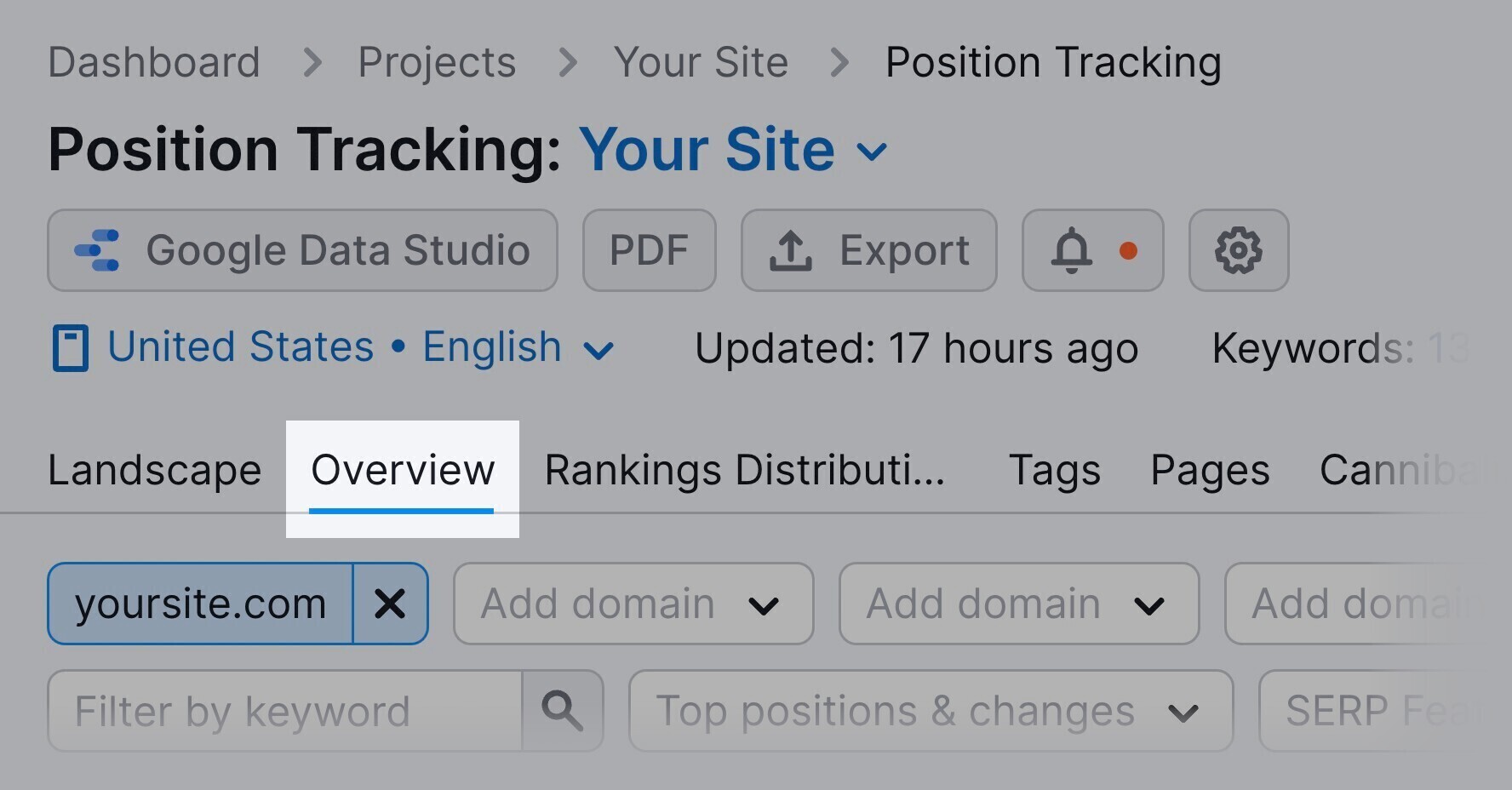
Then, select a duration on the right side of your screen.
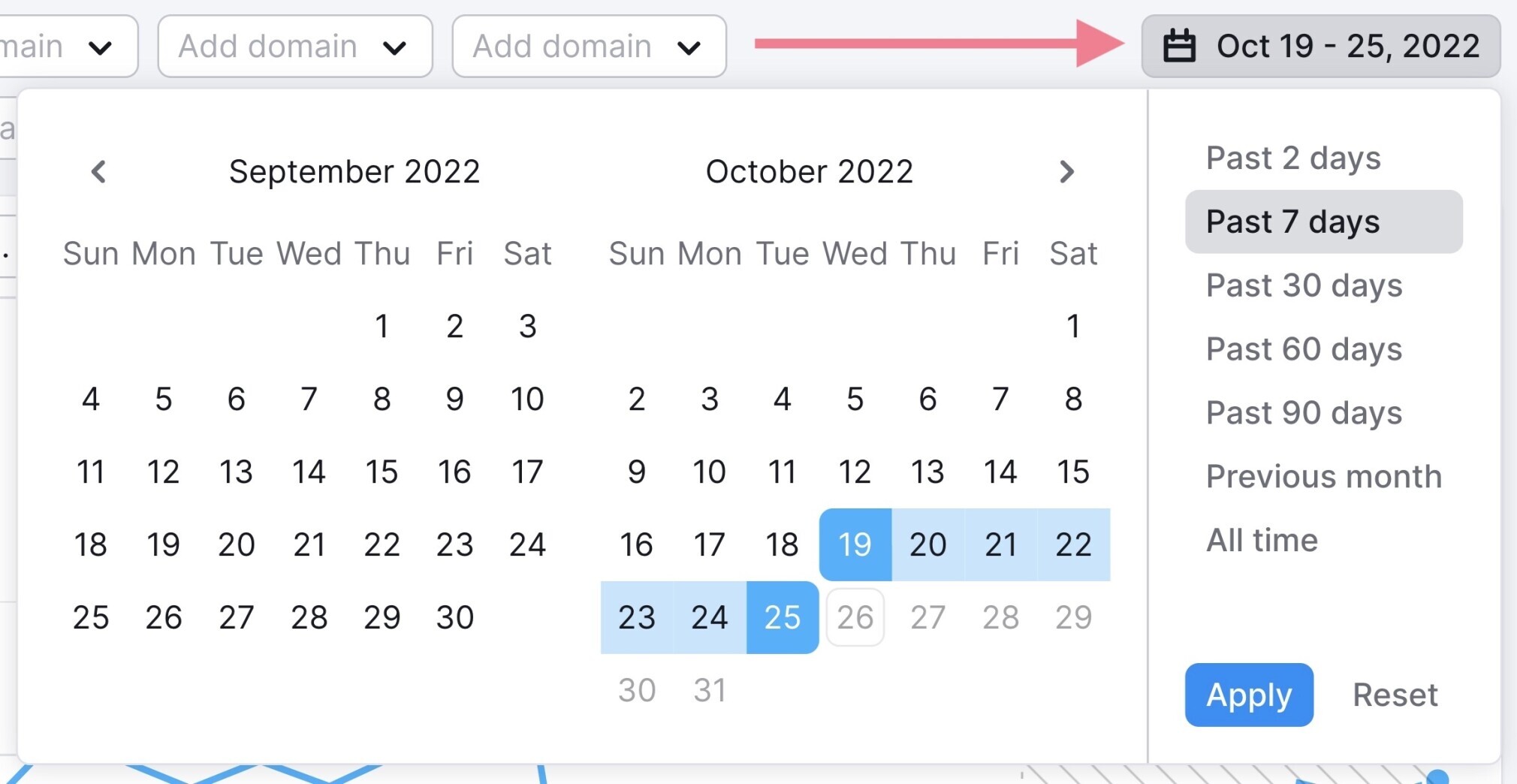
Next, scroll down to see how your site is performing for that time frame.
It’s in the “Rankings Overview” section:
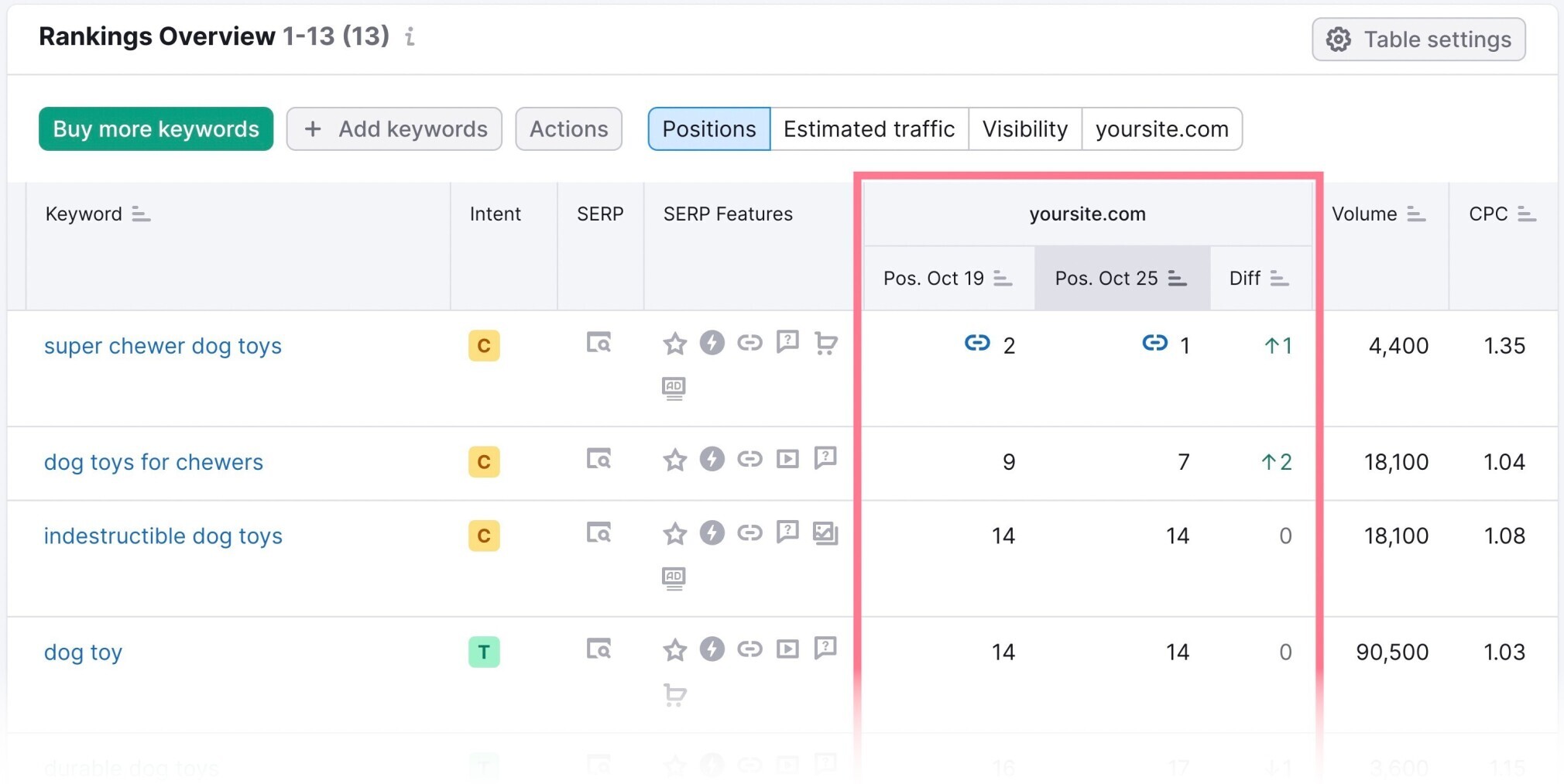
You now have access to a list of your target keywords, along with any position changes.
Monitor Your Keyword Search Rankings & Improve Your SEO
What do you do when your search engine keyword rankings aren’t making progress?
Here are some simple suggestions:
Check the Competition
Competitor analysis is a big deal in all kinds of business and marketing activities, SEO included.
How do you do that?
Easy: Look for an accurate list of what ranks for your target keyword/s.
To do that, go back into the Position Tracking tool. And select the project you just created.

Then, scroll down until you see “Top Keywords.” Click the blue “View all # keywords” button.
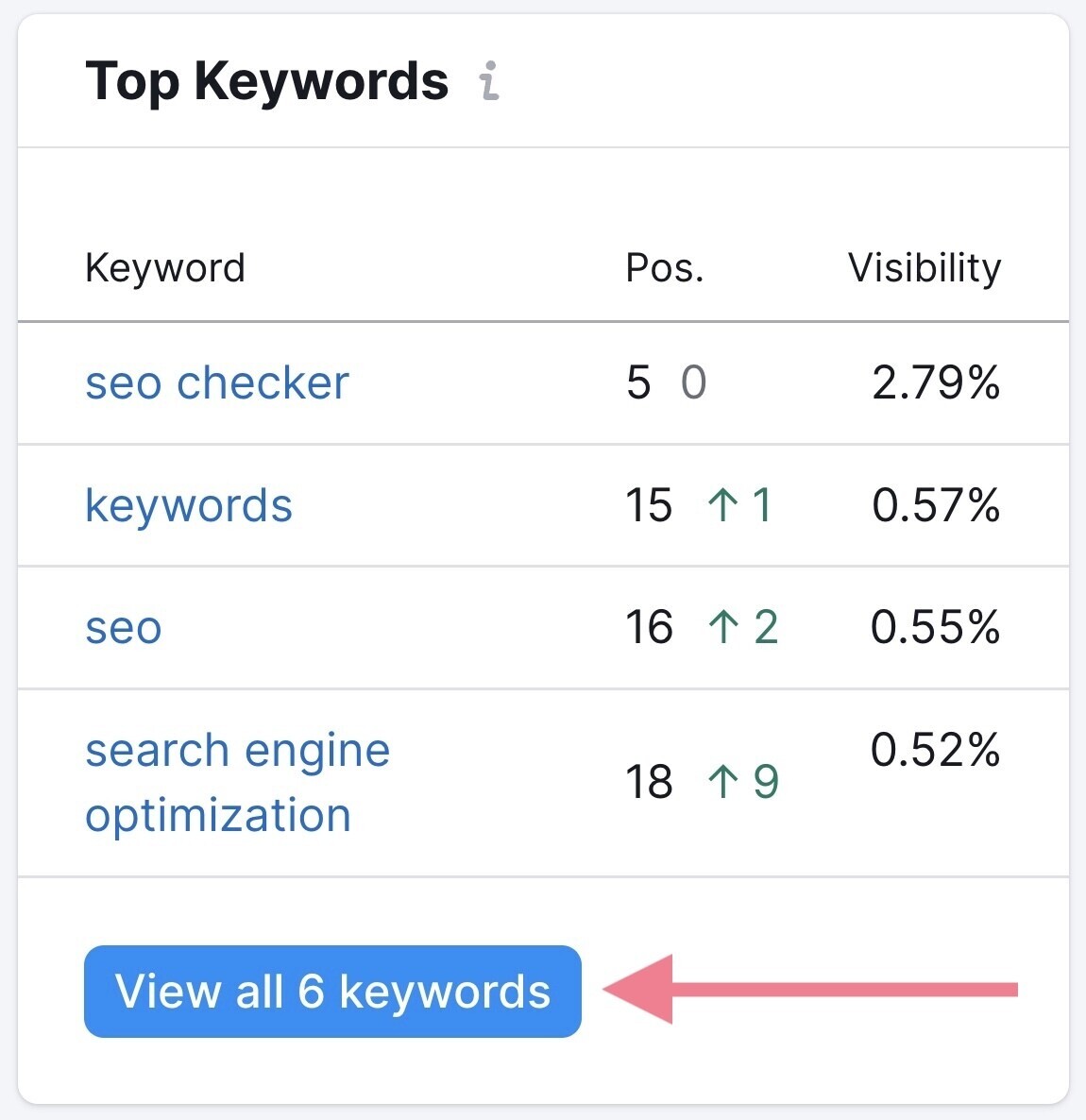
Scroll to the list of keywords you’re tracking.
Then, click the icon with the “View SERP” tooltip.
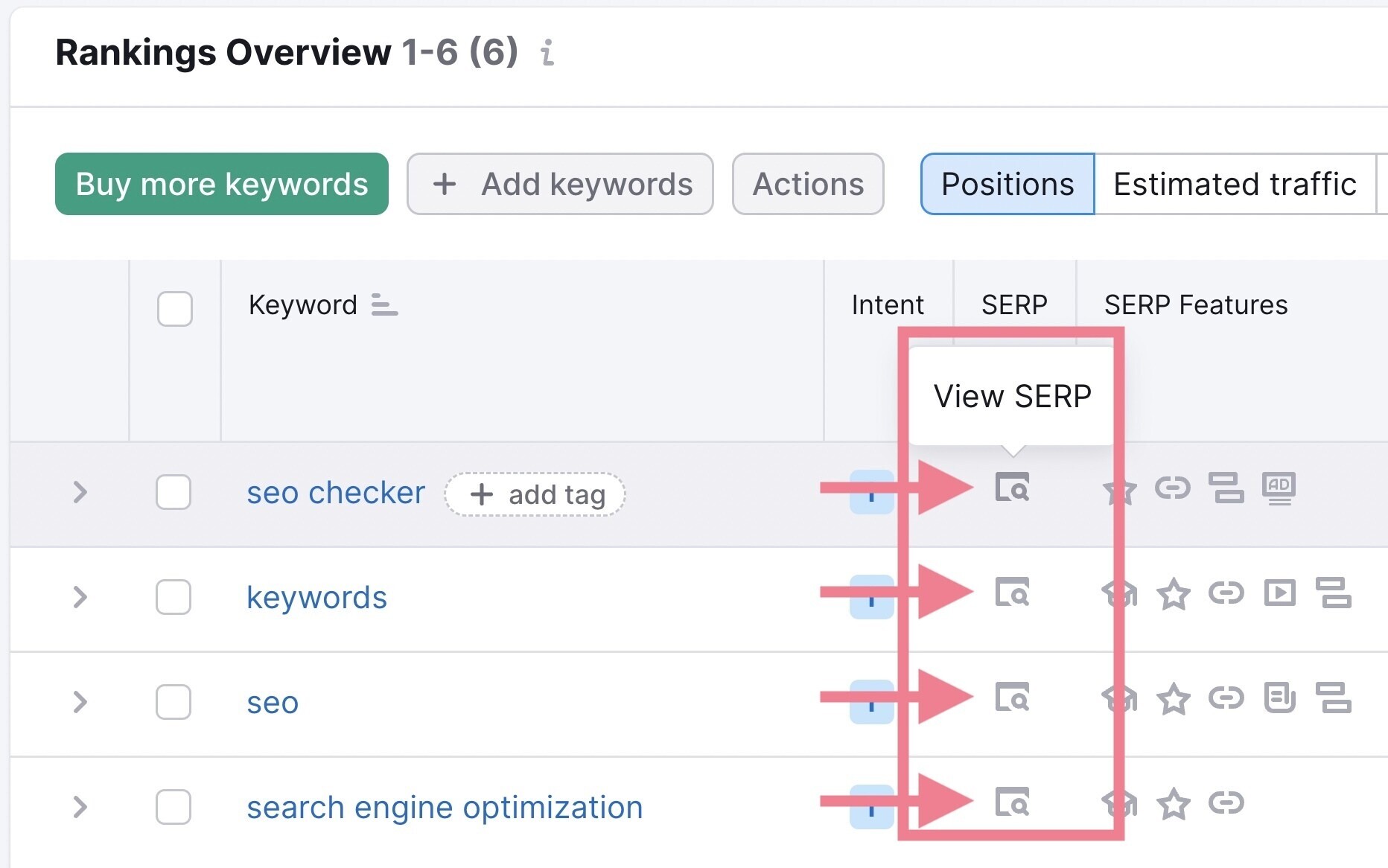
Now, you see the SERP for your keyword. It’s a snapshot of the SERP taken from your chosen location.
It should look like this:

Now, you can see who is competing (and ranking) for that keyword.
So, what are you looking for here? All kinds of stuff:
- Do your titles and meta descriptions include the right keywords?
- What types of resources are ranking? Blog posts, product pages, visual assets?
- Are the ranking pages addressing content you aren’t?
Find out what you’re missing. Then improve your content. Hopefully, a higher keyword ranking will follow.
Assess Search Intent
Search intent is the purpose behind someone’s search. And it’s arguably the most important factor that influences your keyword rankings.
More specifically:
What is the intent of the keyword you’re targeting? And does your content serve the search intent?
There are four main types of search intent:
- Navigational. The searcher is looking for a specific website.
- Informational. The searcher wants to learn more about a topic.
- Commercial investigation. The searcher wants to learn more about a product or service they might purchase.
- Transactional. The searcher wants to make a purchase.
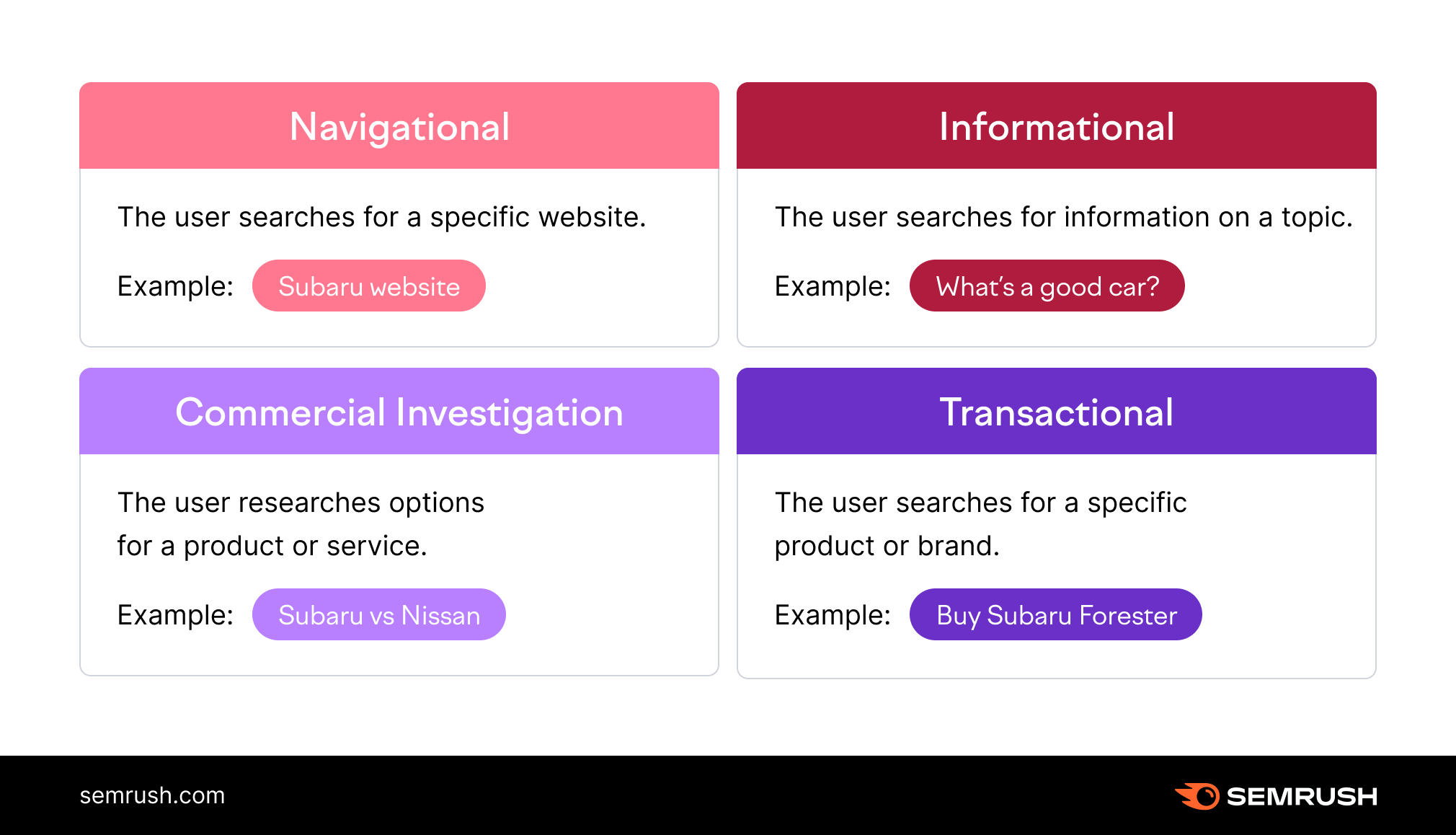
You can see the search intent for each keyword right inside your Position Tracking campaign.
Here:
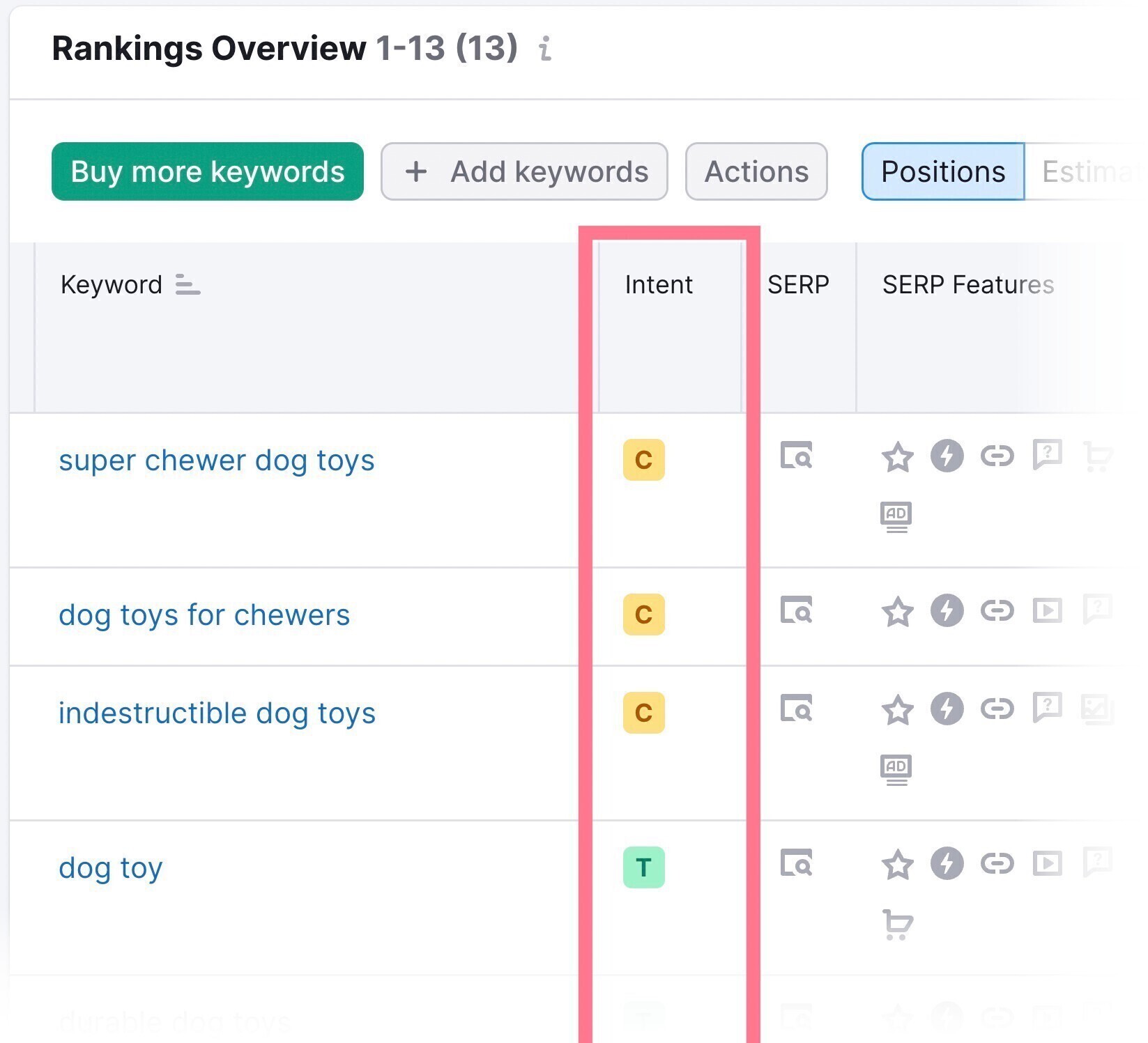
Find the search intent of the keyword you’re concerned about. Then review the content you’re using to target that keyword.
Does it serve the search intent (perfectly)?
Here are a few ways to find out:
- If yours is an informational keyword, did you provide in-depth, specific information answering the query?
- If it’s transactional, did you provide a way for the user to buy the product or service they’re interested in?
- If the intent is commercial, did you provide comprehensive information related to the product or service the user wanted to know more about?
- And if the intent is navigational, did you provide access to the specific webpage the user wanted to navigate to?
You may need to revise the page you want to rank to match the user’s search intent.
Put Keywords in the Right Places
If you want to rank well in Google for a particular keyword, you have to use that keyword somewhere on the page you want to rank.
In general, you want to put your target keyword (or variations of it) in the following places:
- The page title and meta description
- Header tags like H1, H2, and H3
- The introduction
- The body content
Page Title and Meta Description
Optimizing your title tags and meta descriptions is one of the easiest ways to help improve your rankings. They help Google know what your page is about.
You can check your page titles and meta descriptions in a couple of ways:
1. Use your SEO plugin.
If you’re using the WordPress CMS (content management system), plugins like Yoast and Rank Math make it simple to configure titles and descriptions.
Just go to the page you’re optimizing. Click “Edit page.”
Scroll down to the bottom of the content. (Or go to the post settings in the left sidebar if you’re using the blocks editor.)
Find the SEO editor for your plugin of choice. There, you should see the title and description.
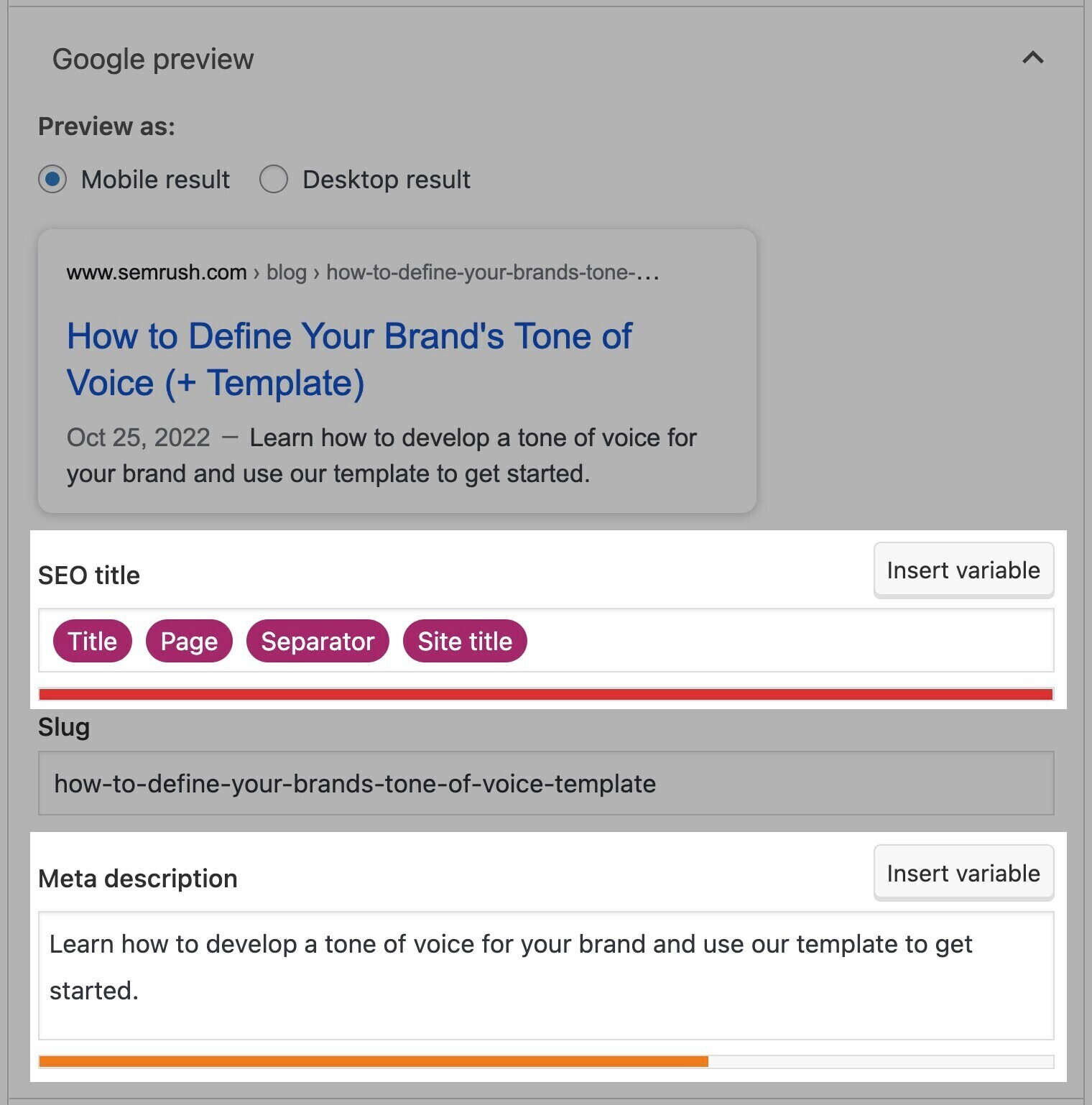
If they’re configured, check:
Do they both have your target keyword in them?
If not, add it.
Note: Meta descriptions aren’t a direct Google ranking factor, but Google may still bold your keyword in your meta description on the SERP. And including your keyword can increase click-through rate (CTR). These factors can lead to indirect SEO benefits.
2. Check the code.
If you don’t have access to a simple SEO plugin and can’t see page titles or meta descriptions in your CMS, there’s another option:
Check out the HTML code for the page you’re optimizing.
Here’s how:
In the Google Chrome web browser, enter the URL of the page you want to check.
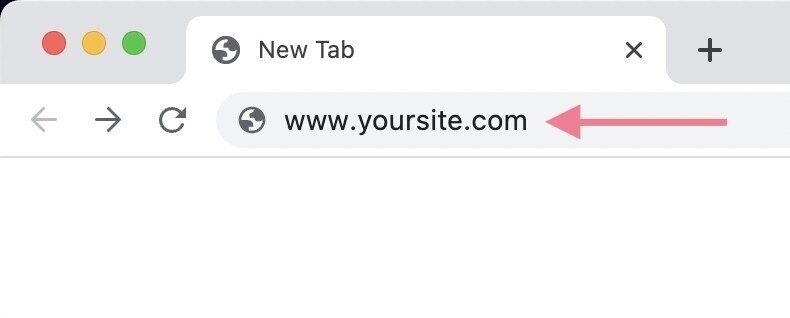
To the left of the URL, type this:
view-source:
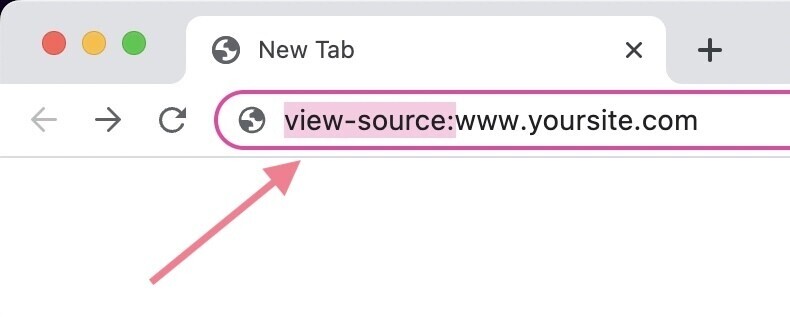
Note the colon at the end. And leave no space between the colon and the start of the URL. Like this:
view-source:https://www.seoquake.com/blog/ecommerce-seo/
Press “Return.”
You should get a look at the source code for the page. It’ll look something like this:
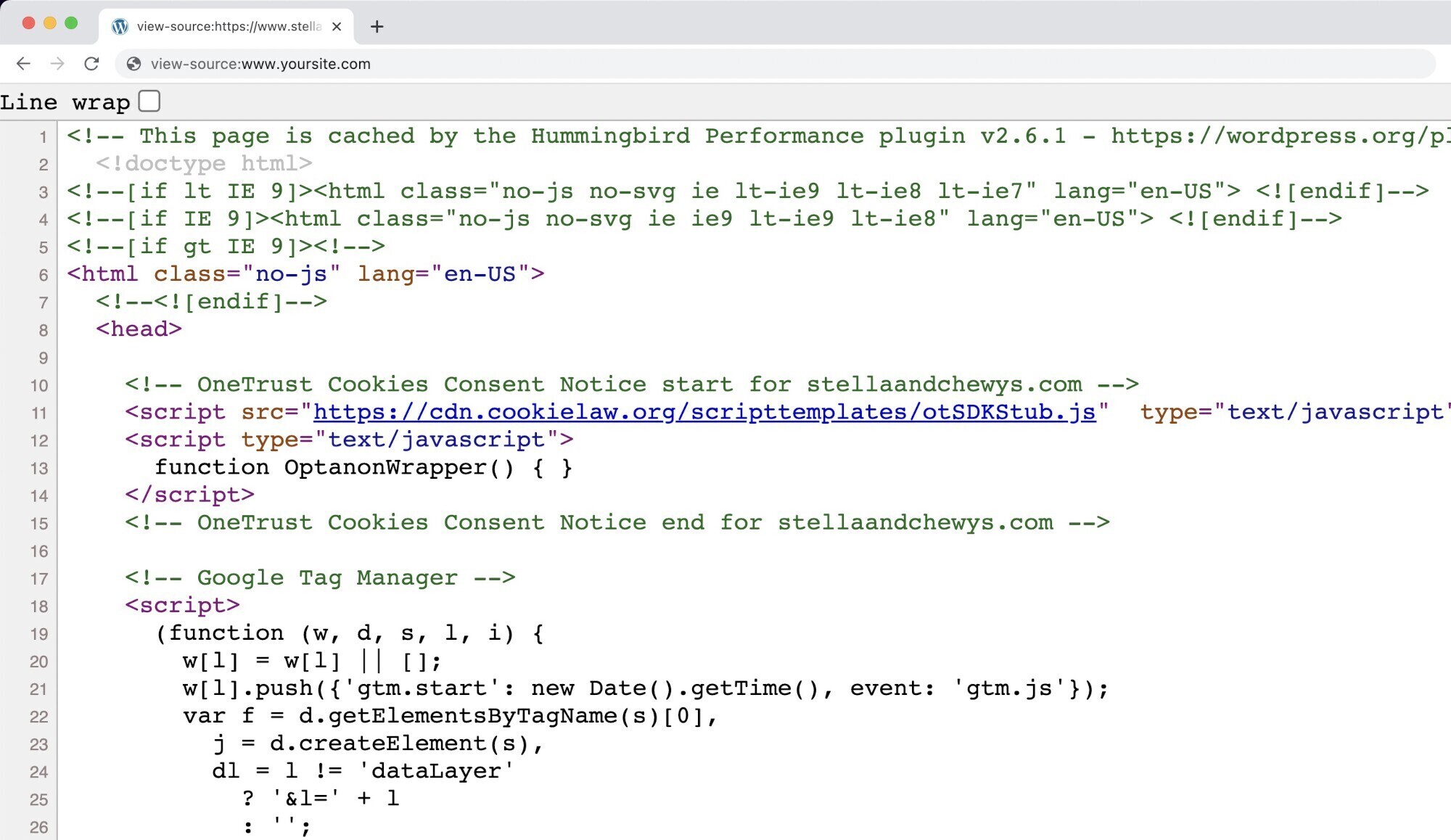
Usually, the meta tags will be near the top of the source code. To find the page title, look for a tag that begins with <title> and ends with </title>.
What’s in between those two tags is your current page title.
Like so:

Your meta description should be nearby.
It might look something like this:
<meta name="description" content=“This is your meta description.”>
Header Tags
Header tags are HTML tags used to separate headings and subheadings on a webpage. And improve readability and SEO.
And here’s how to find them in your CMS.
First, log into your CMS and find the page you’re optimizing.
Look at the headings within the content. The top heading should be an H1.
The main sections should be H2s. And subsections below those should be H3s.
(And so on down to H6, although you probably won’t go that deep.)
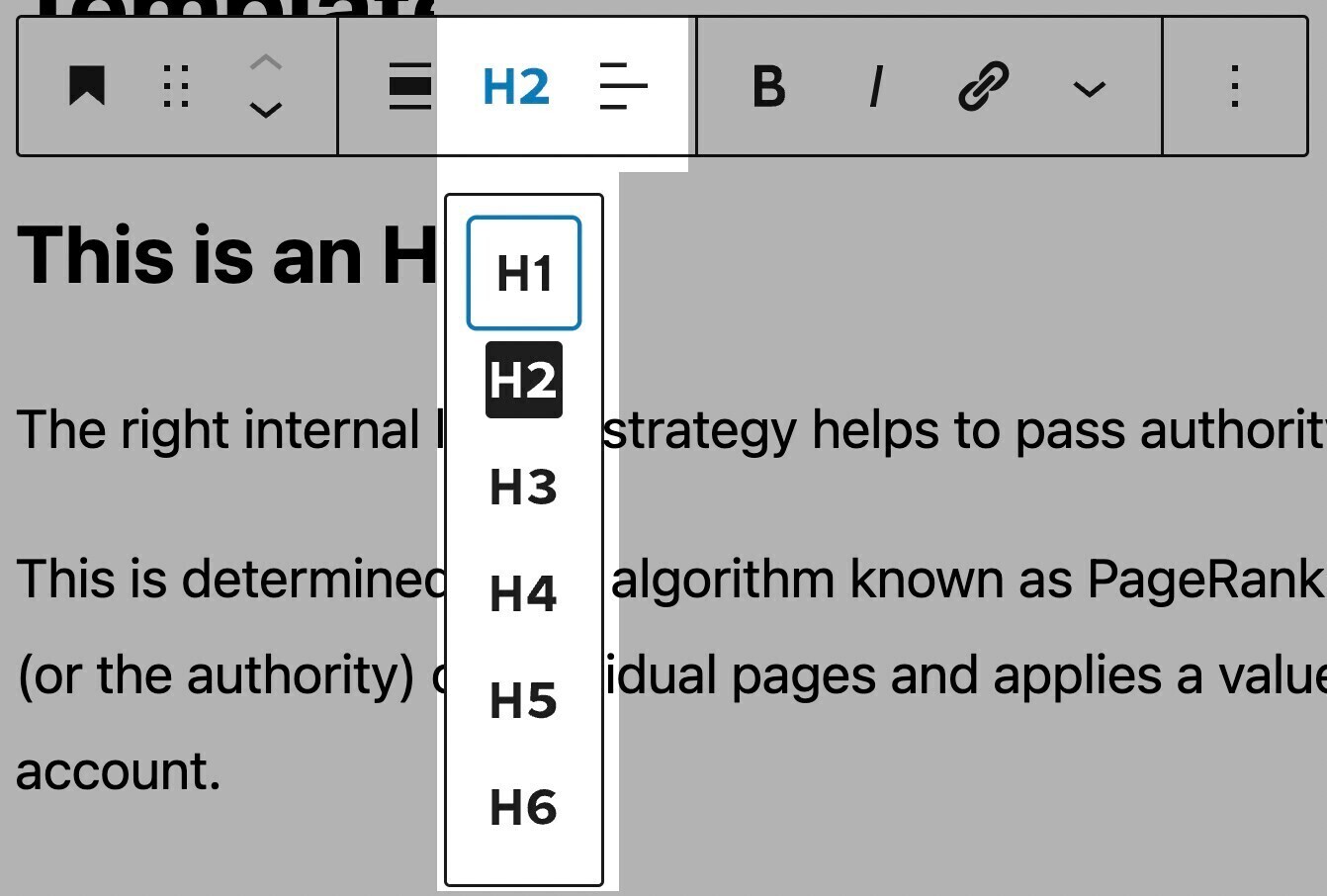
It’s best practice to include your target keyword in your H1.
Introduction
One of the best ways to improve your keyword ranking for a particular keyword is to create content about that keyword.
That's because it helps Google understand whether your pages match search intent.
So, make sure you're using the keyword and variations of that keyword throughout your piece.
Here's how it looks in the introduction:
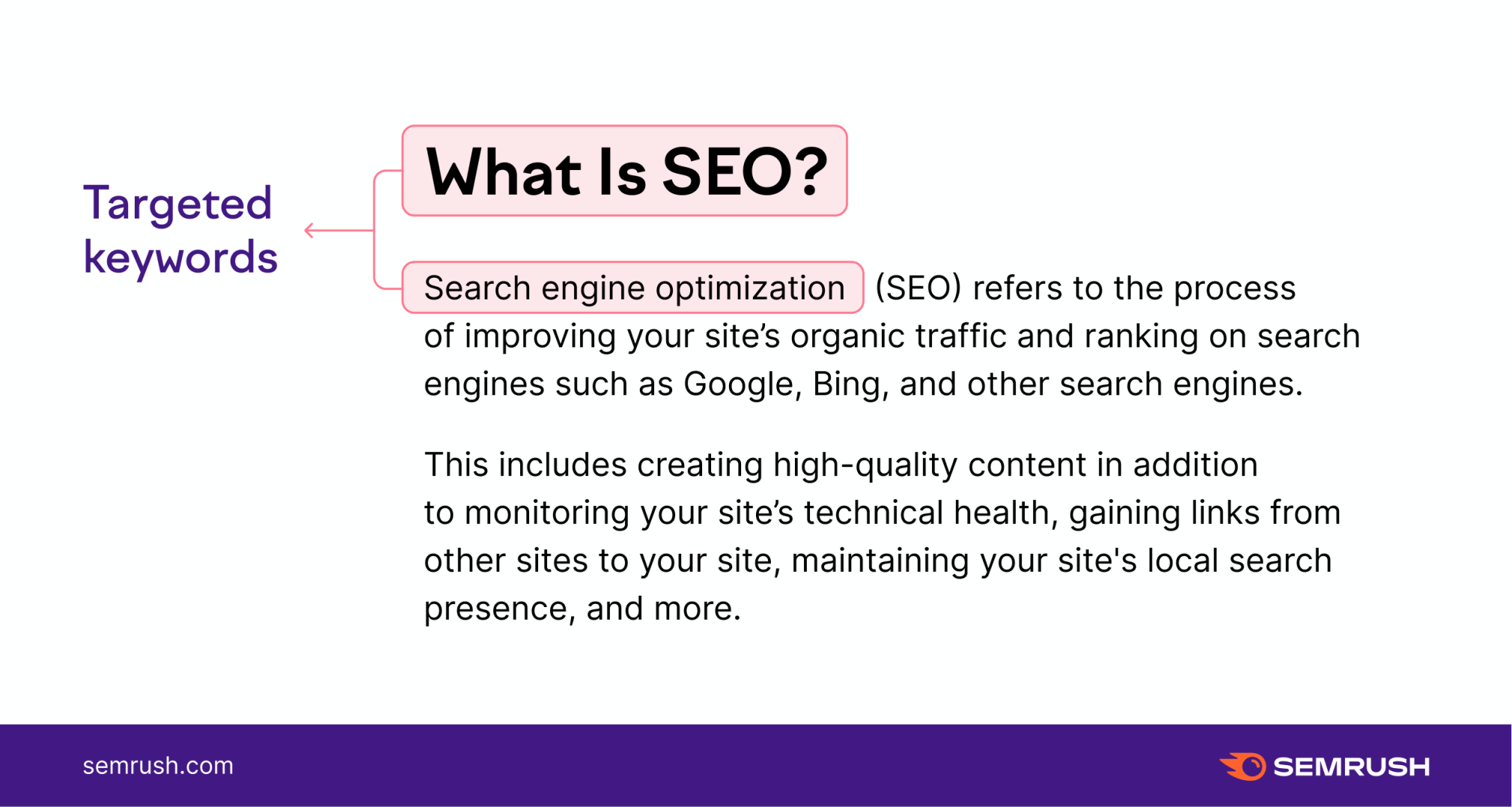
If it doesn’t currently appear in your intro, add it.
Take It a Step Further
Keyword rankings rise and fall over time. But you want to keep them consistently going up.
How do you do that?
One way is by staying informed about changes in SEO (as well as the basics).
Reading the Semrush blog is a great way to do that.
(For example, check out this post with 15 ways to improve rankings.)
Do the SEO best practices. Track your keyword rankings. Stay informed.
And you’ll get results.
